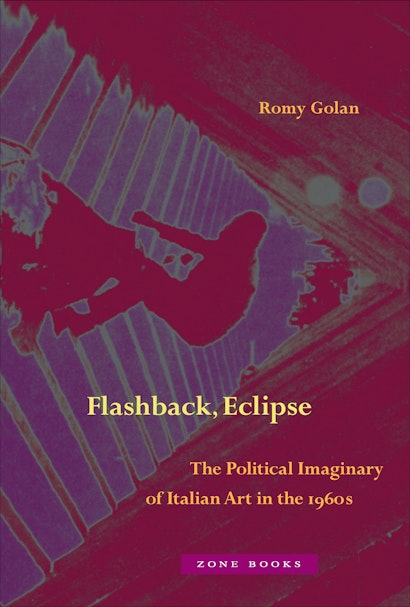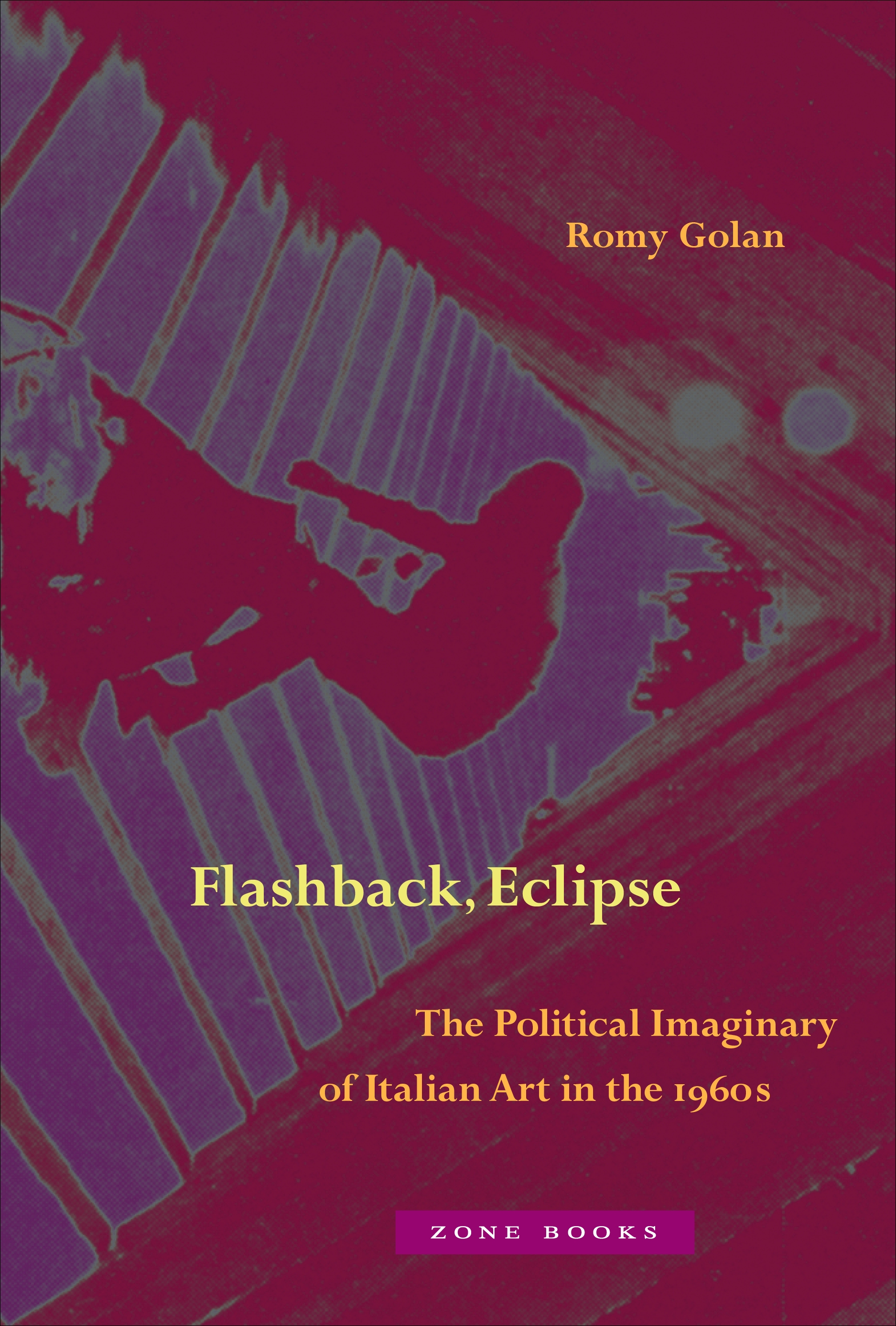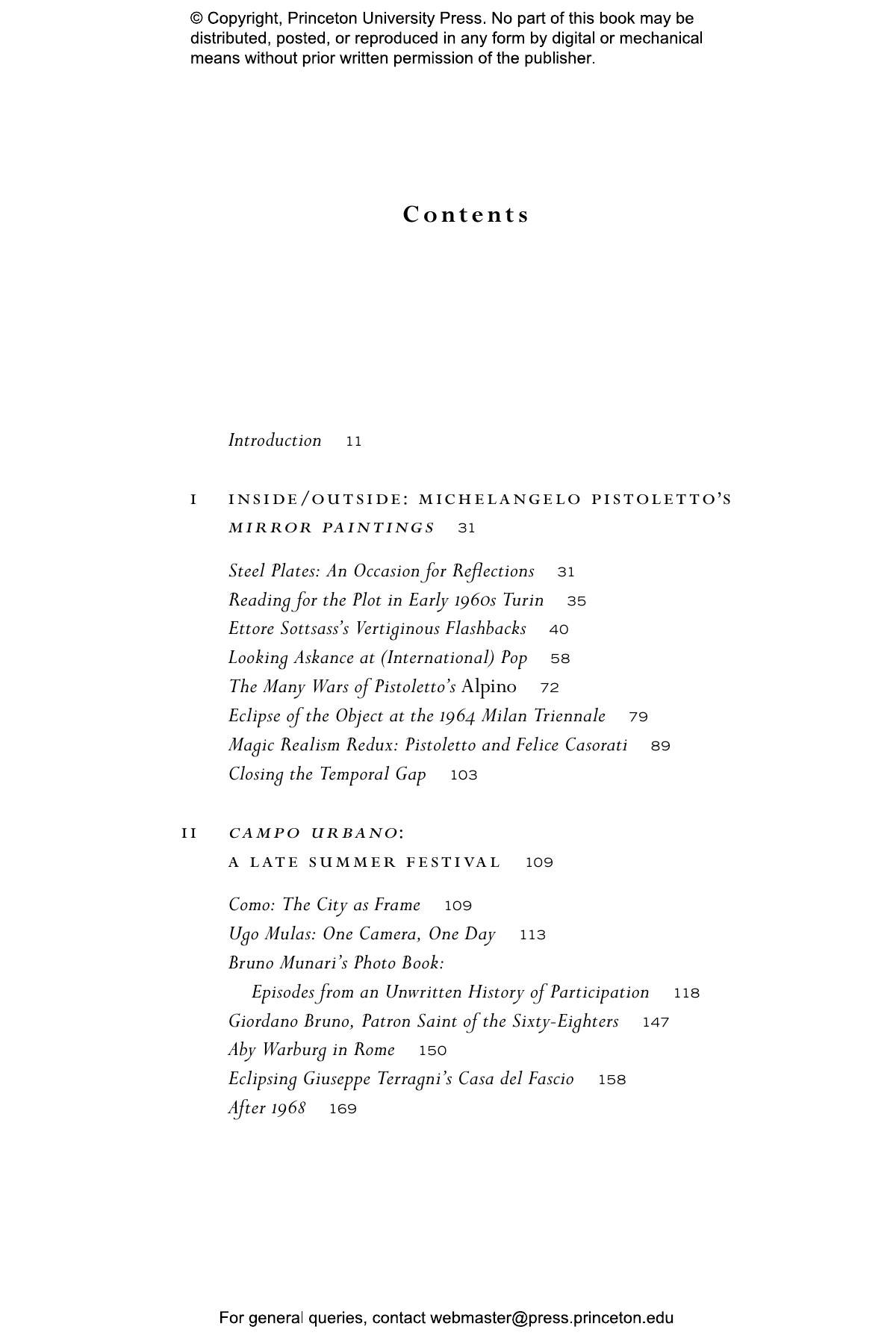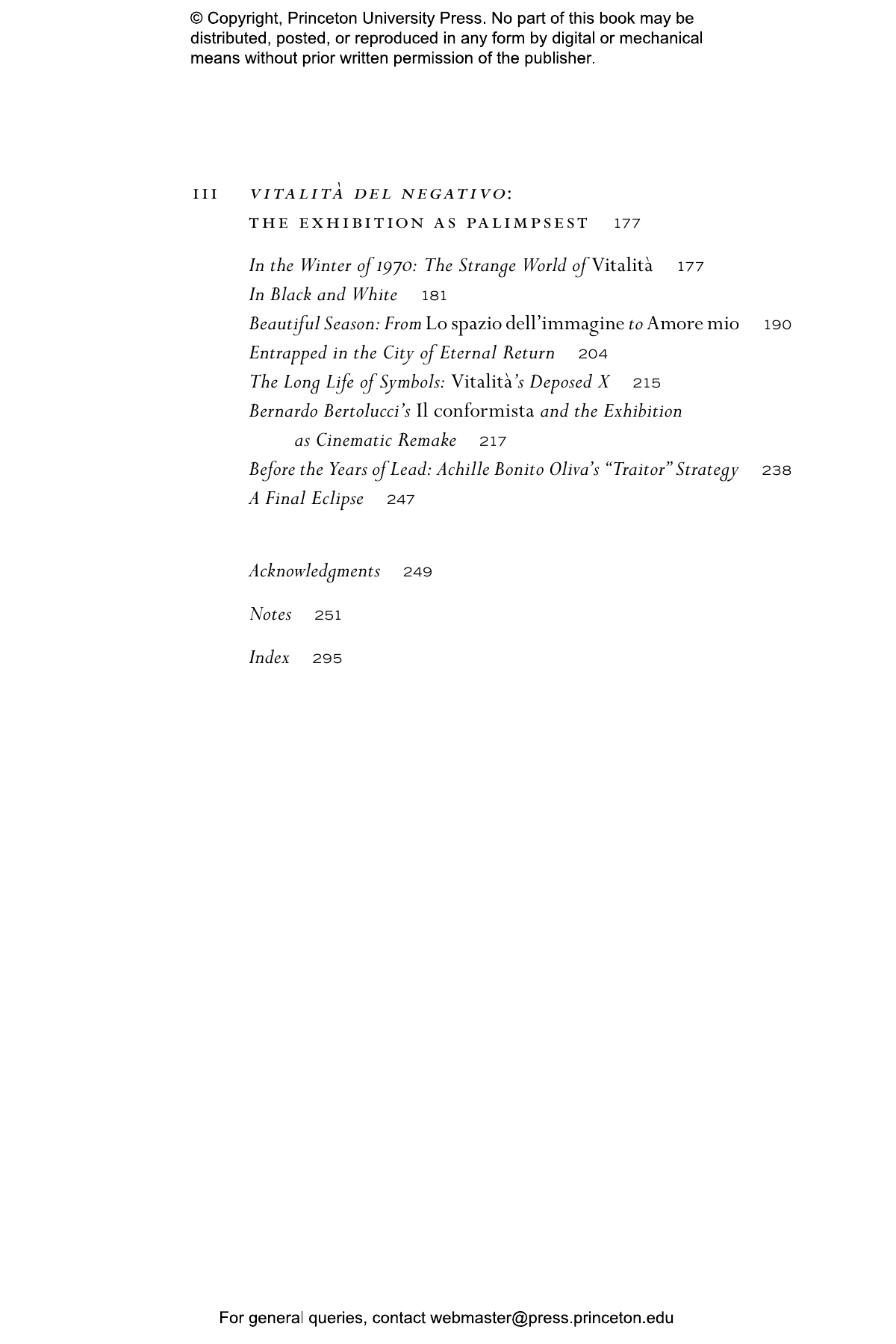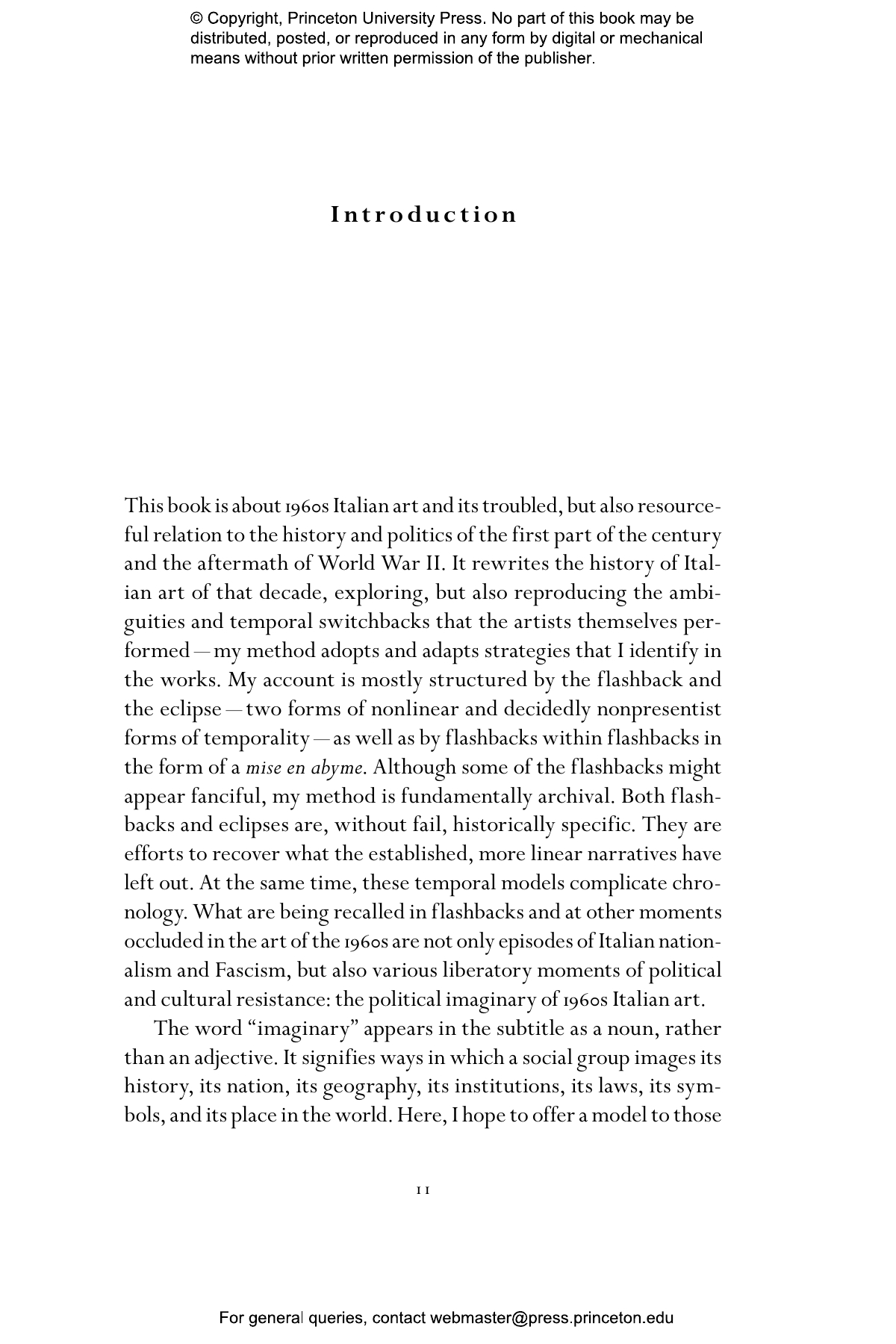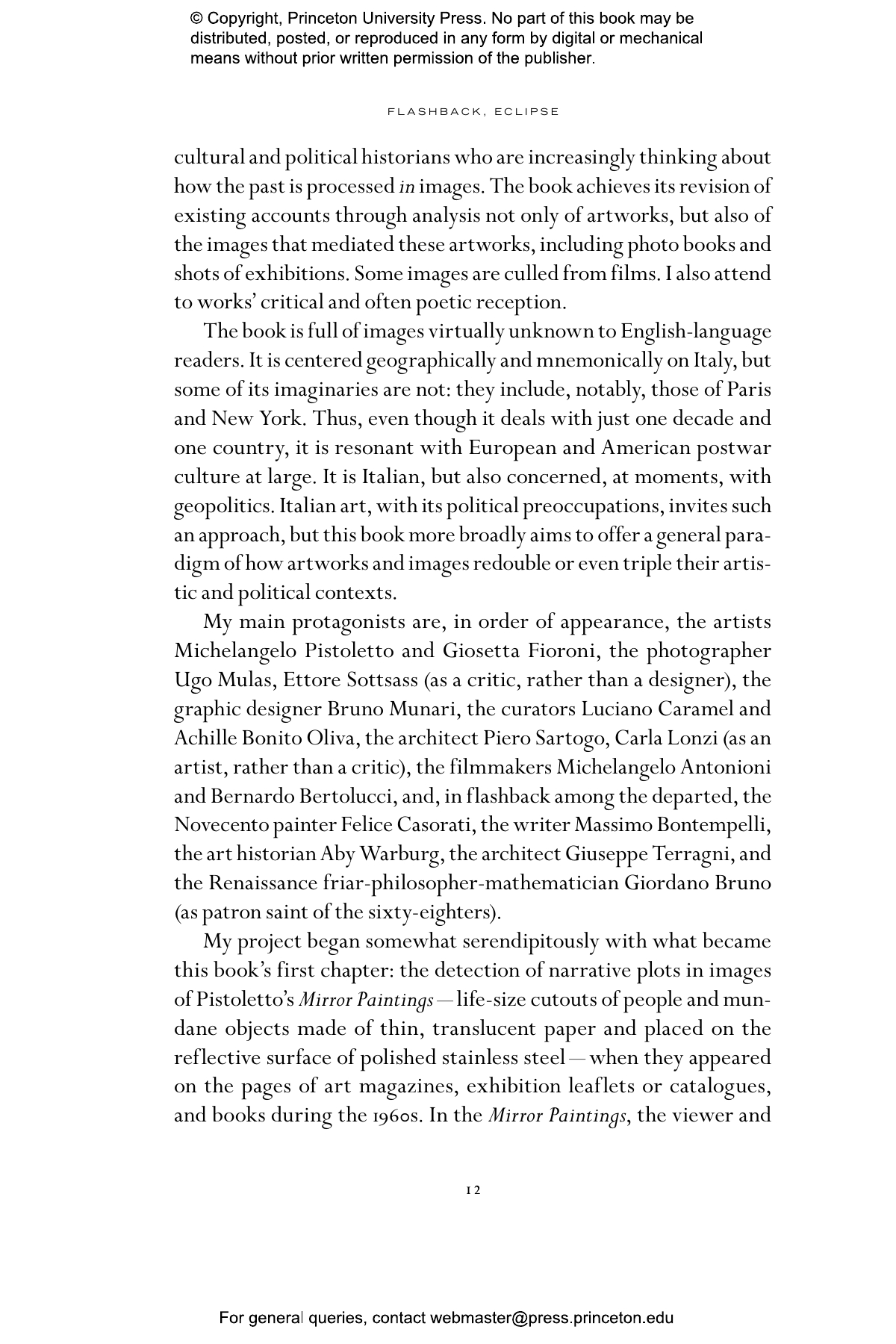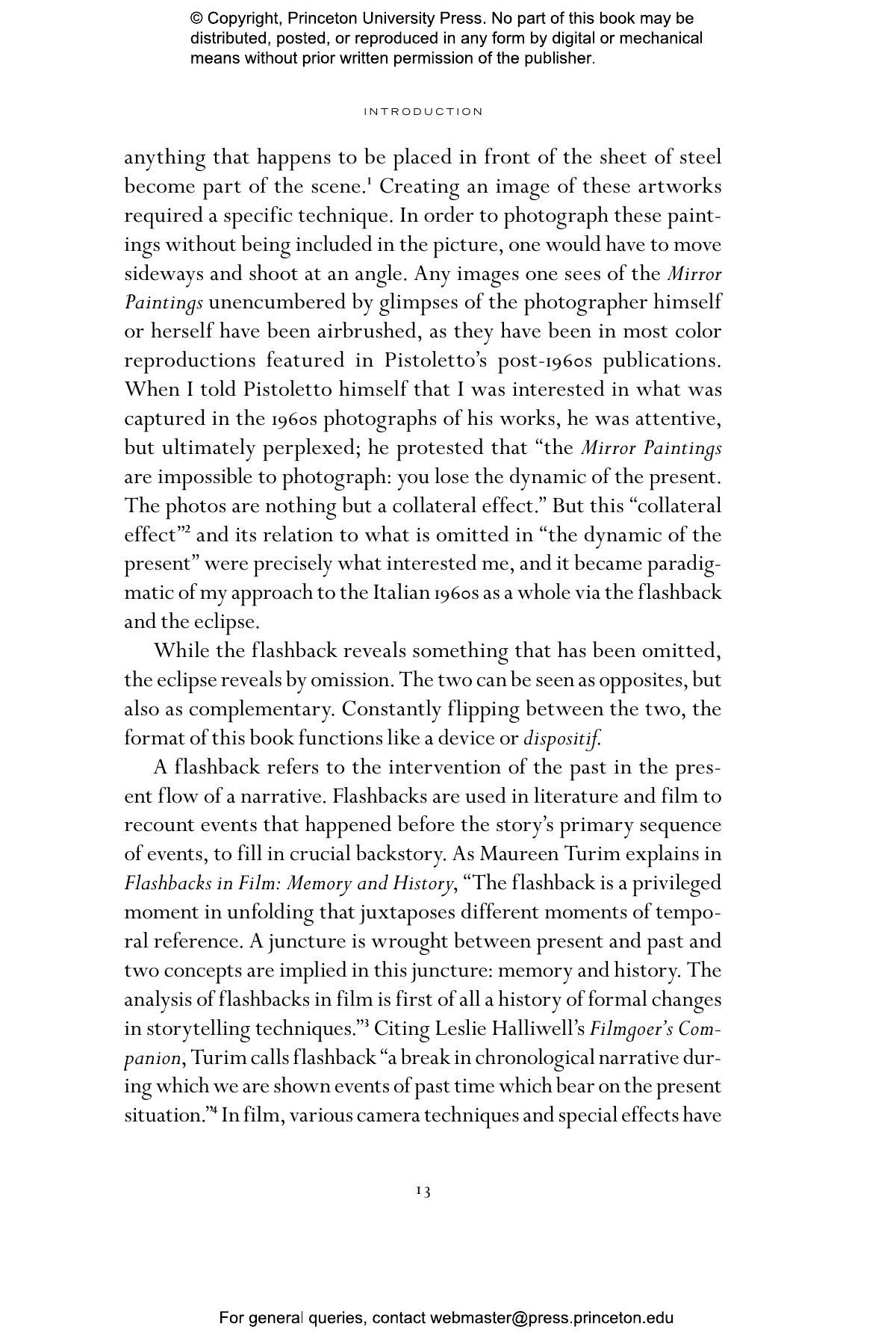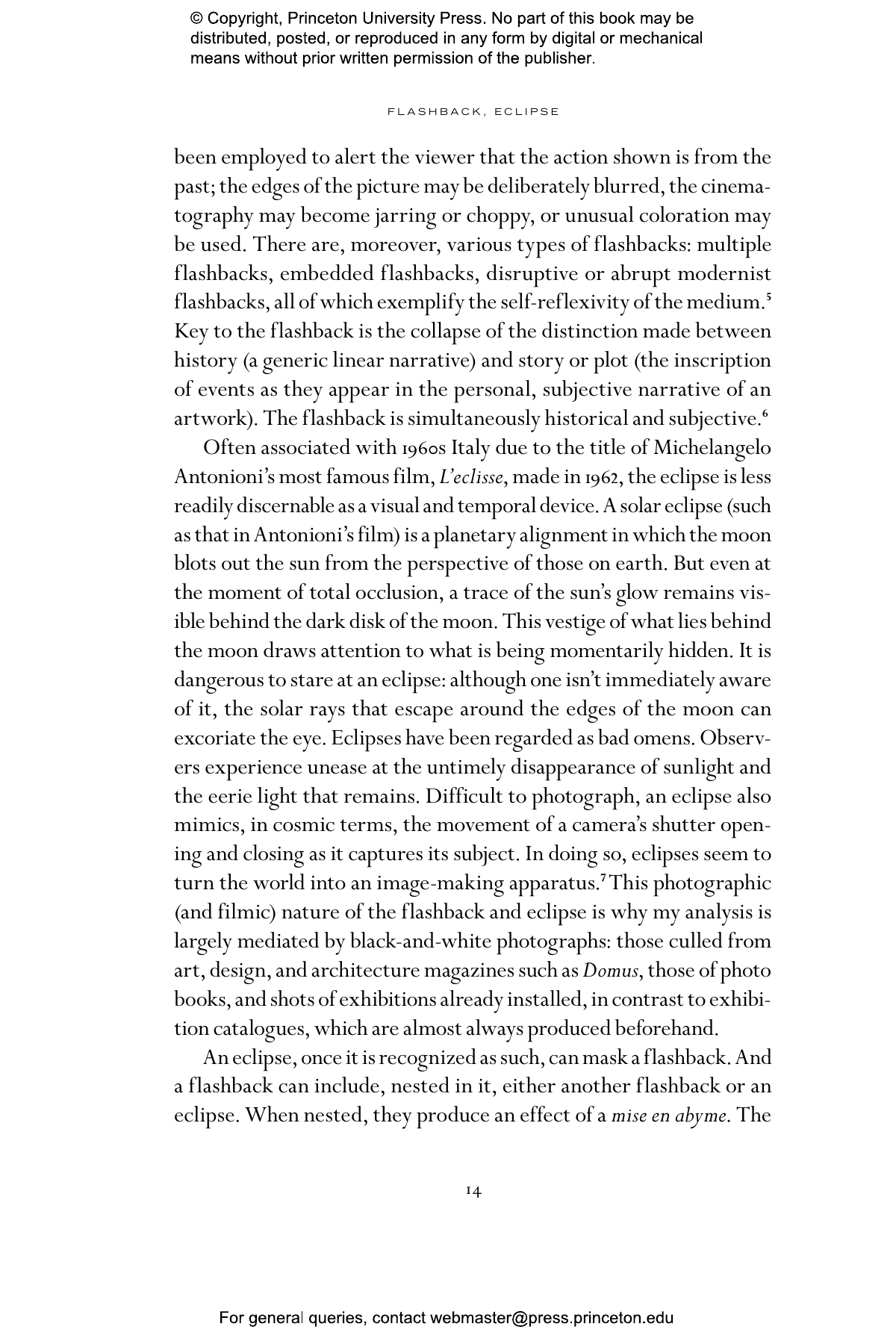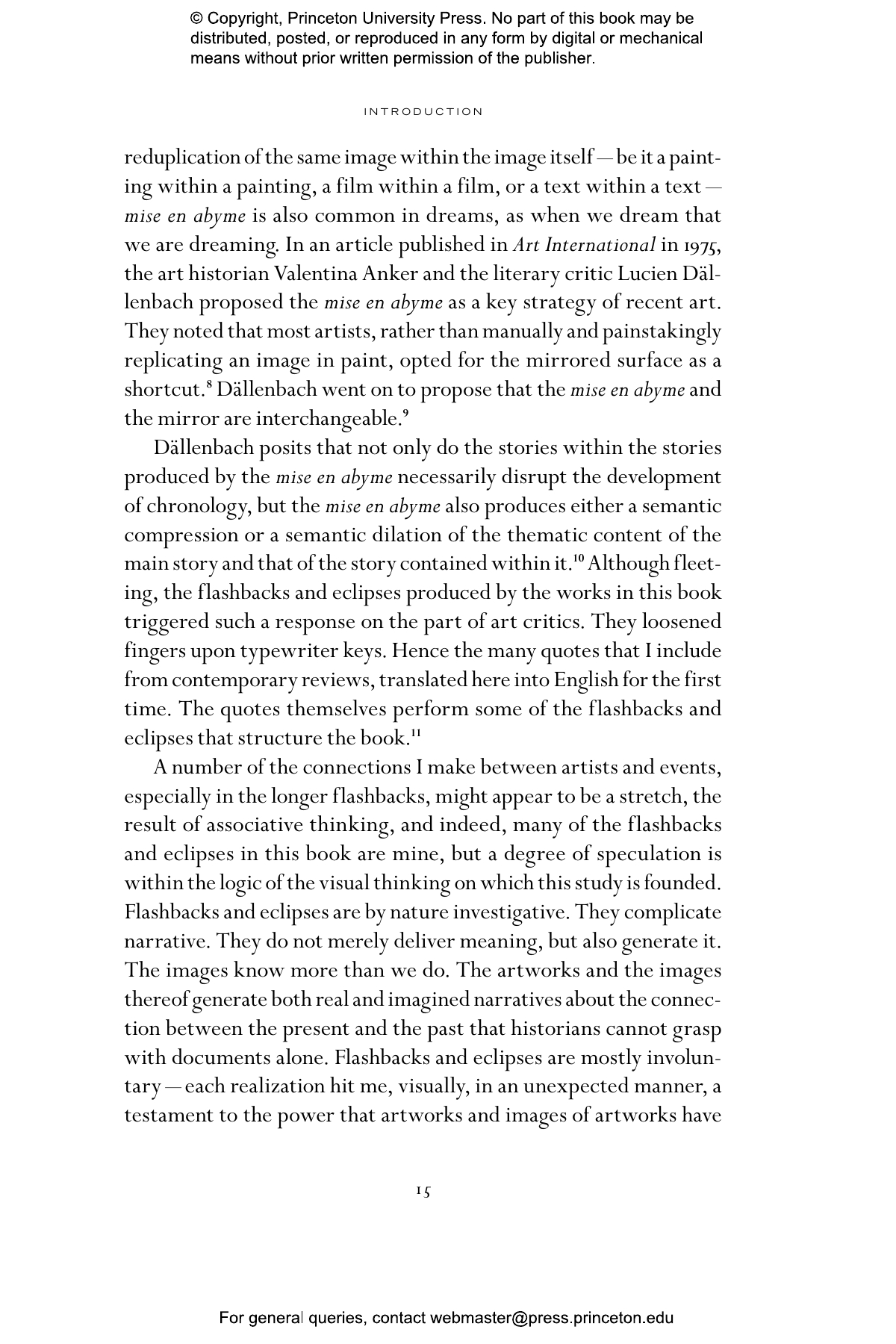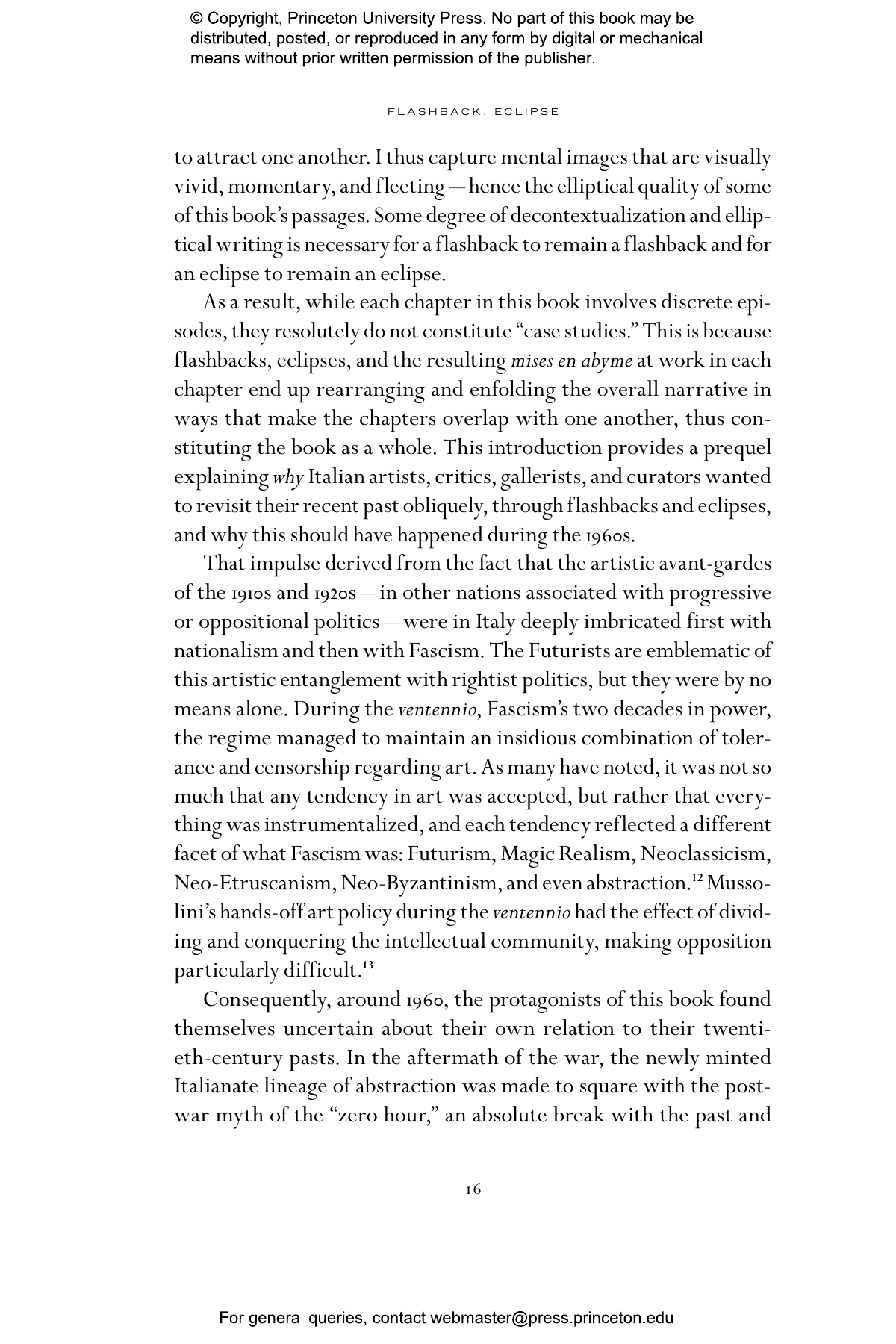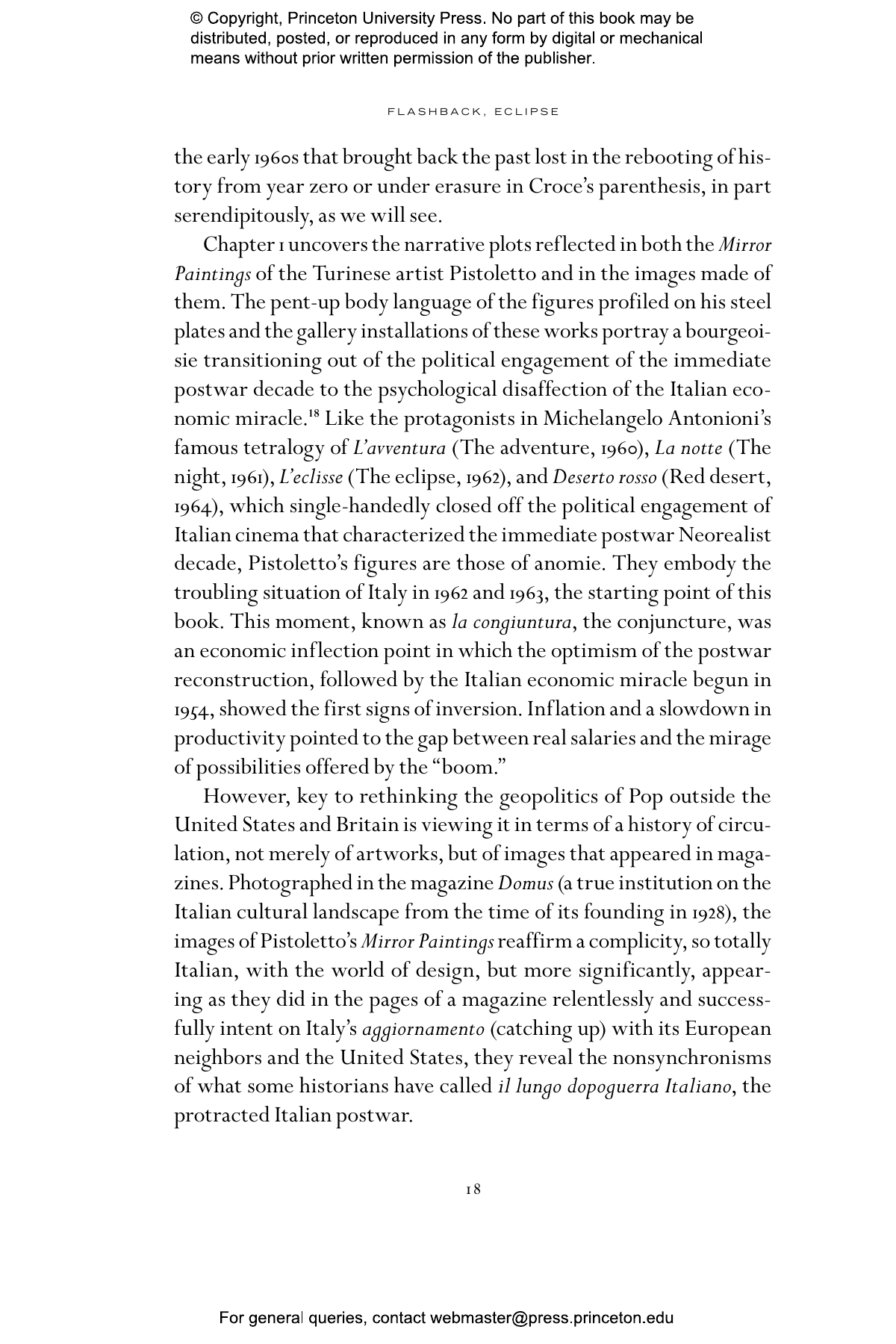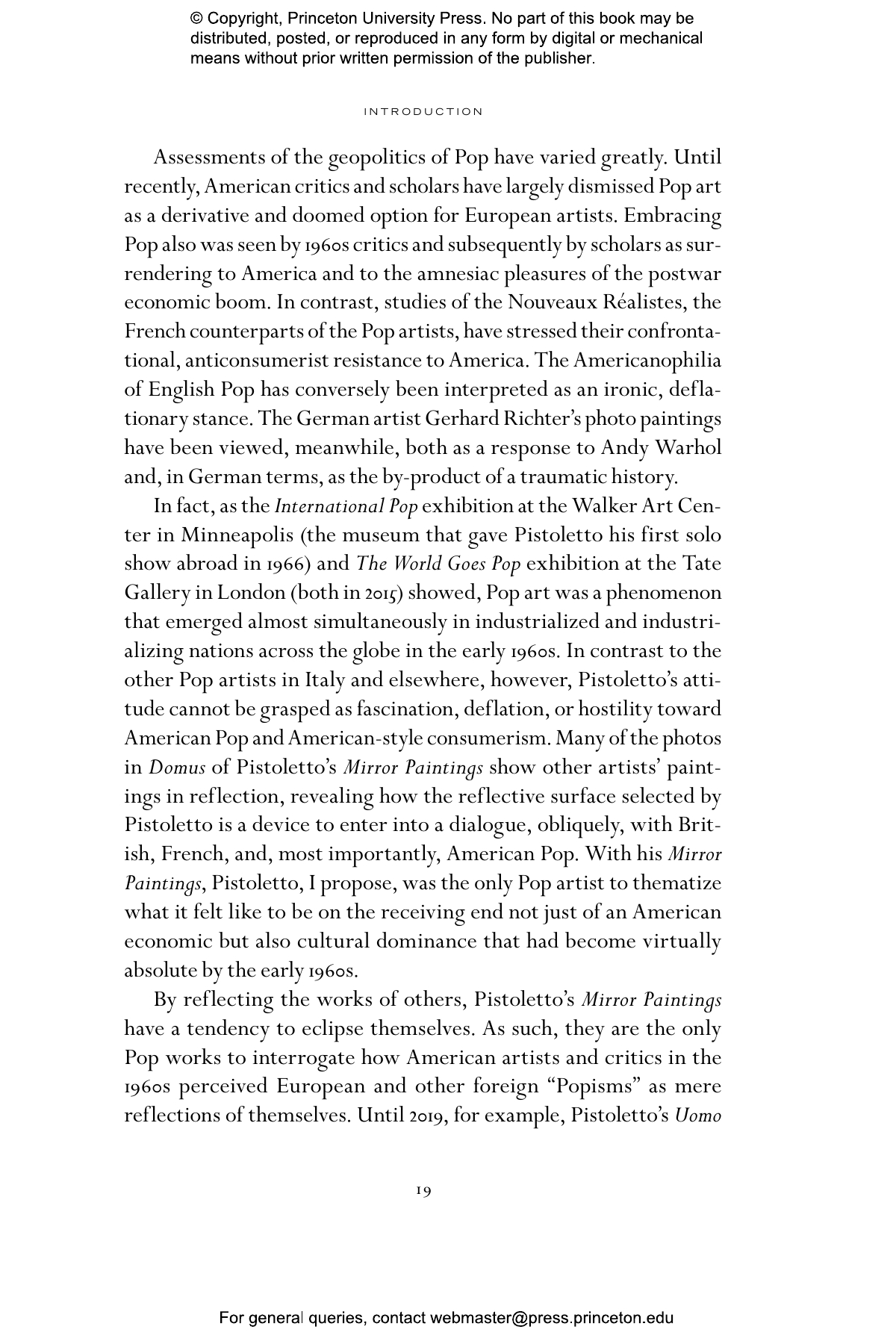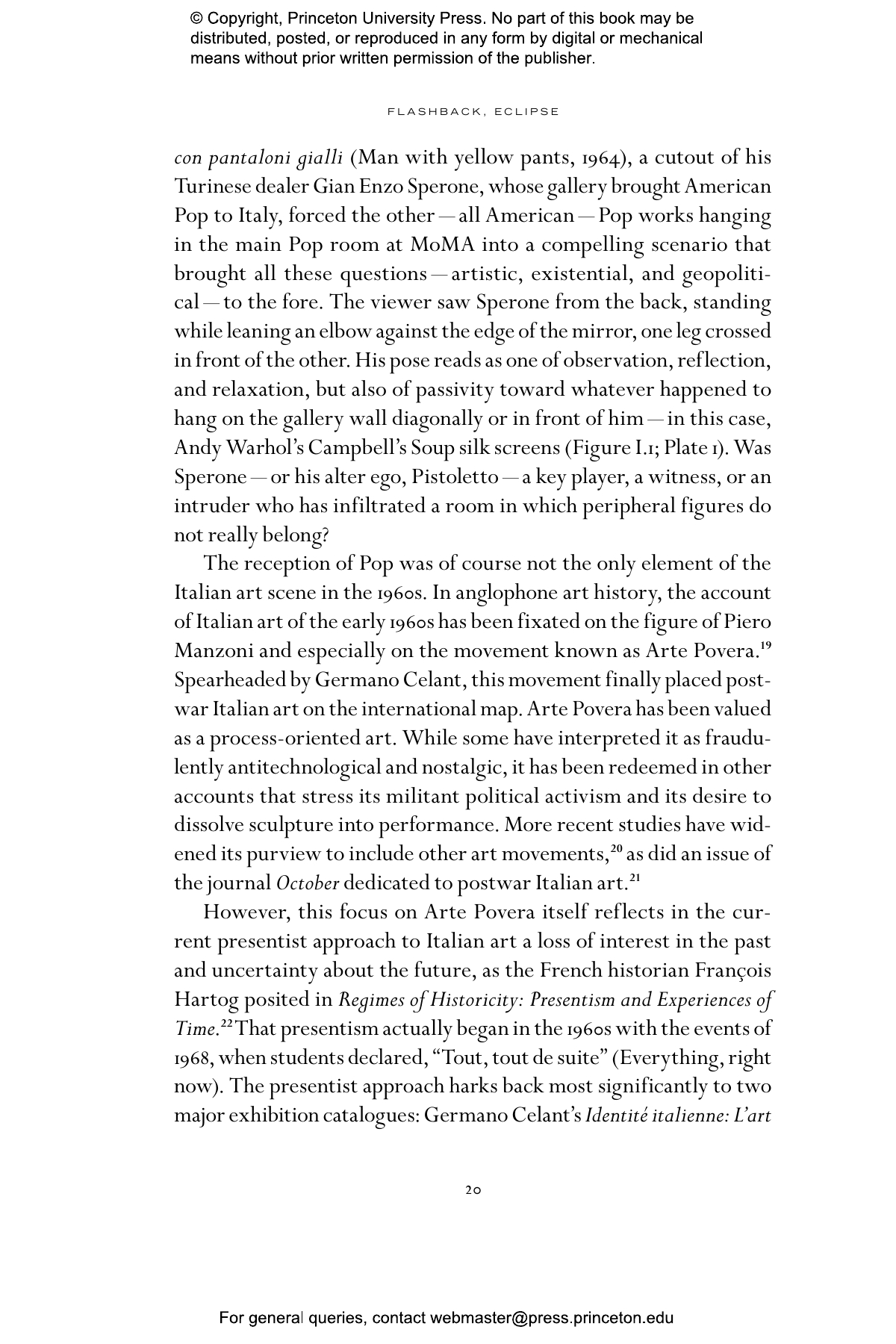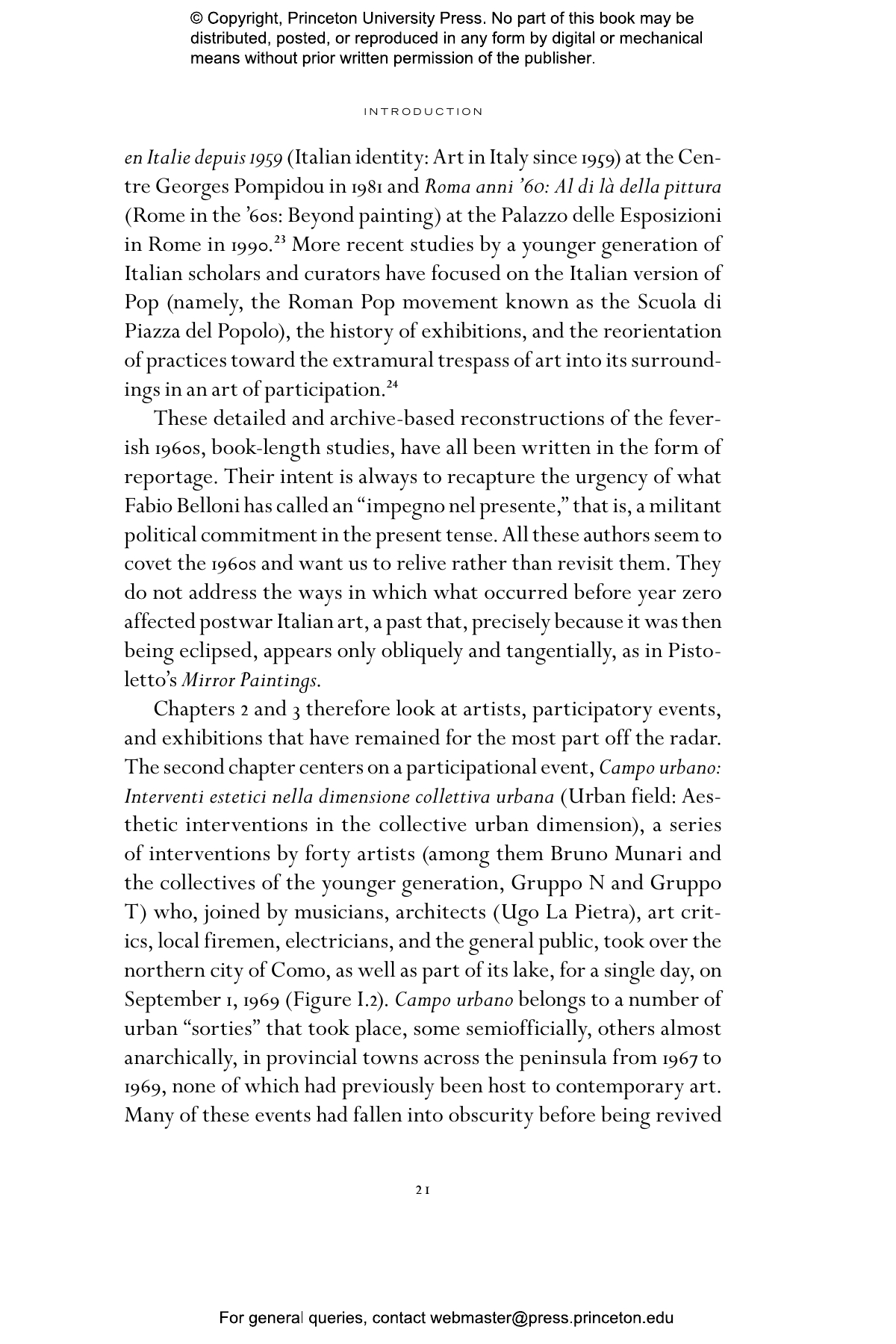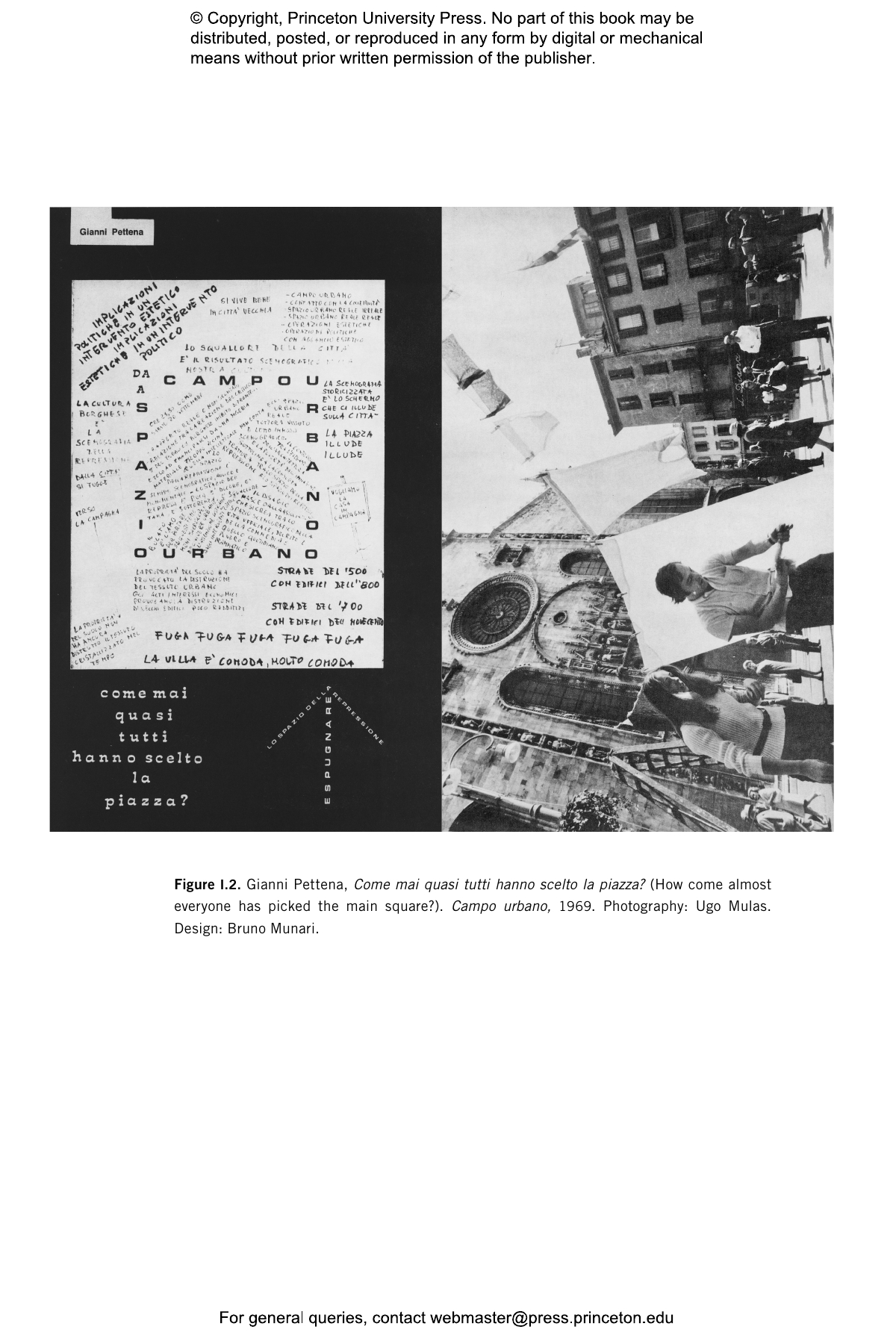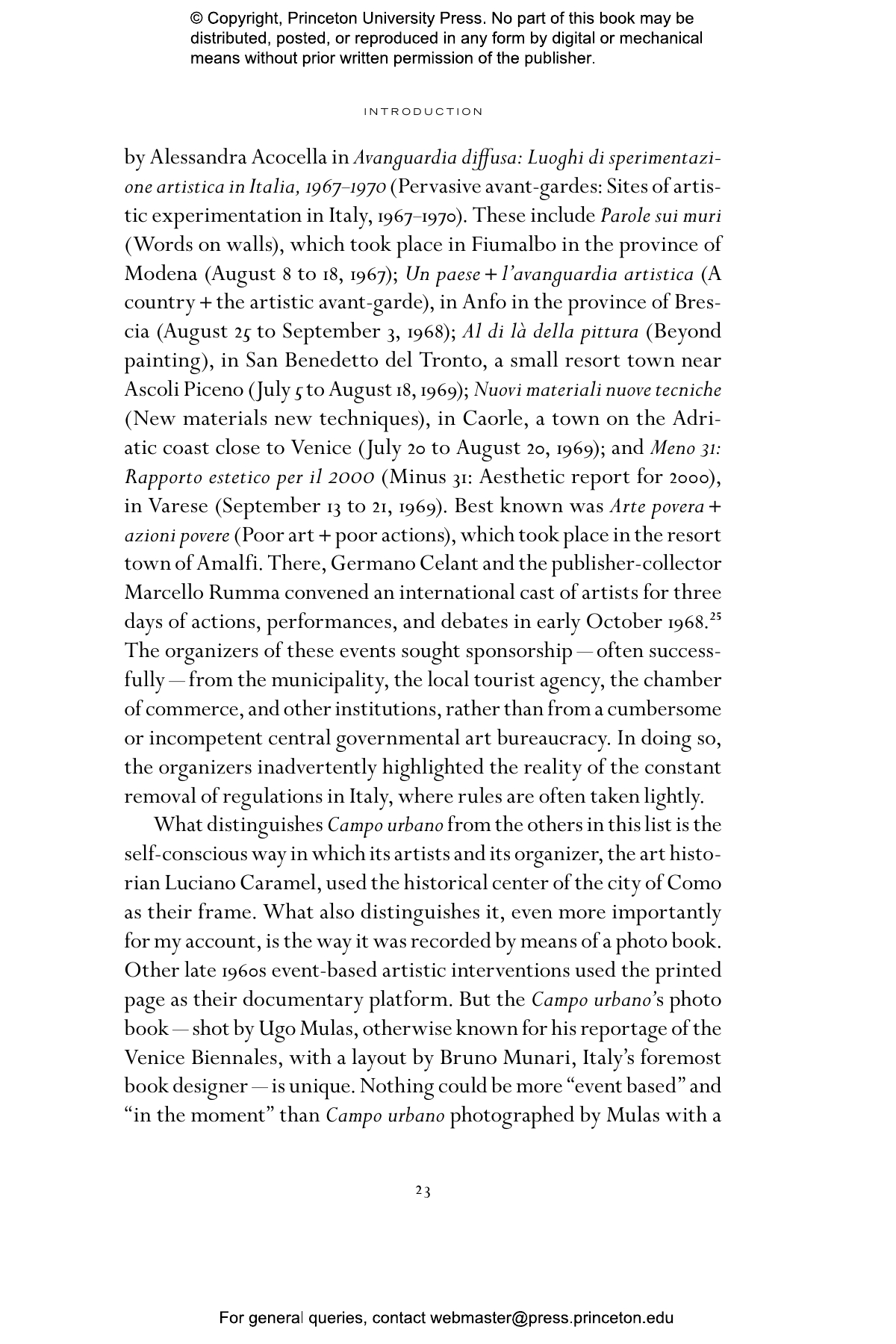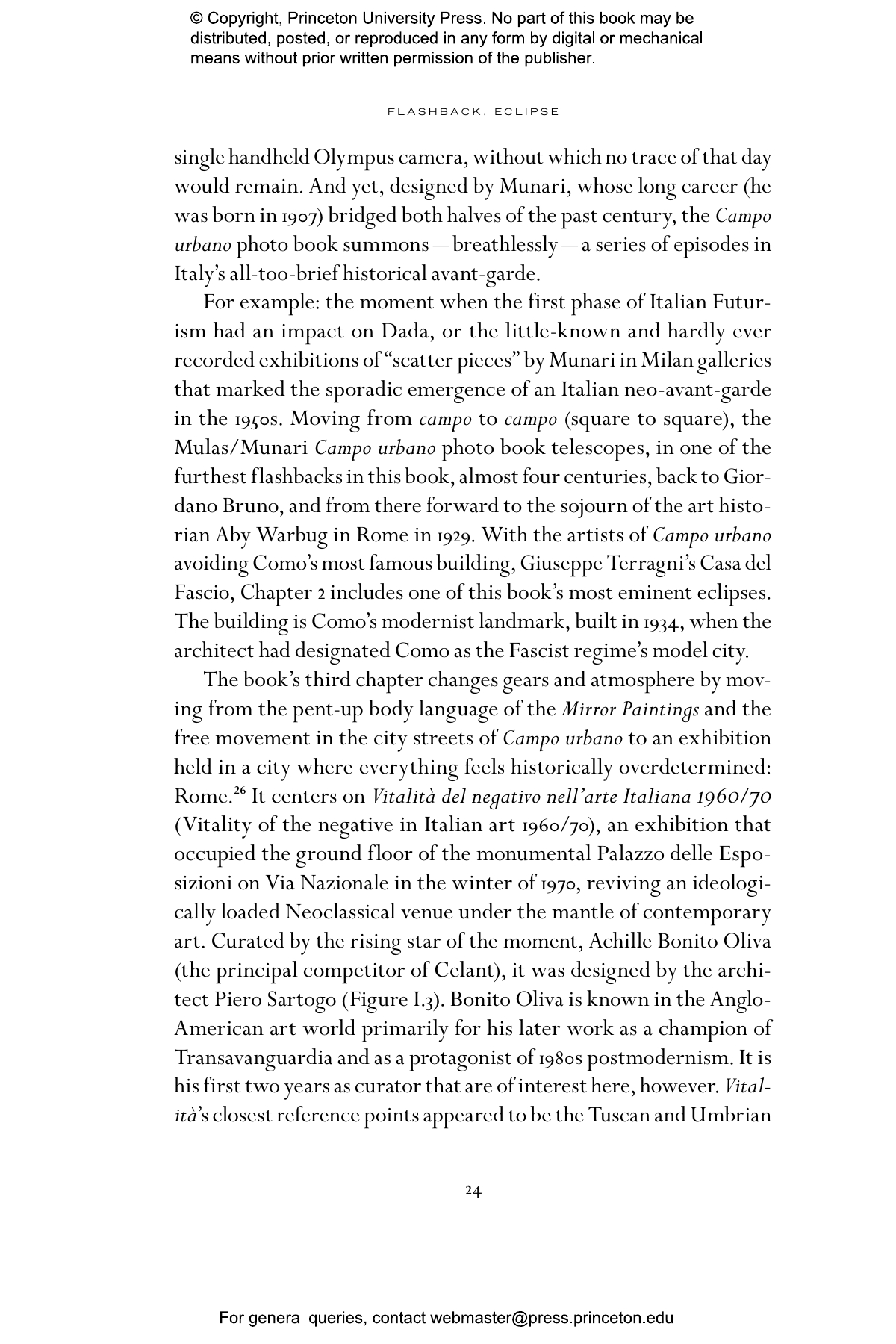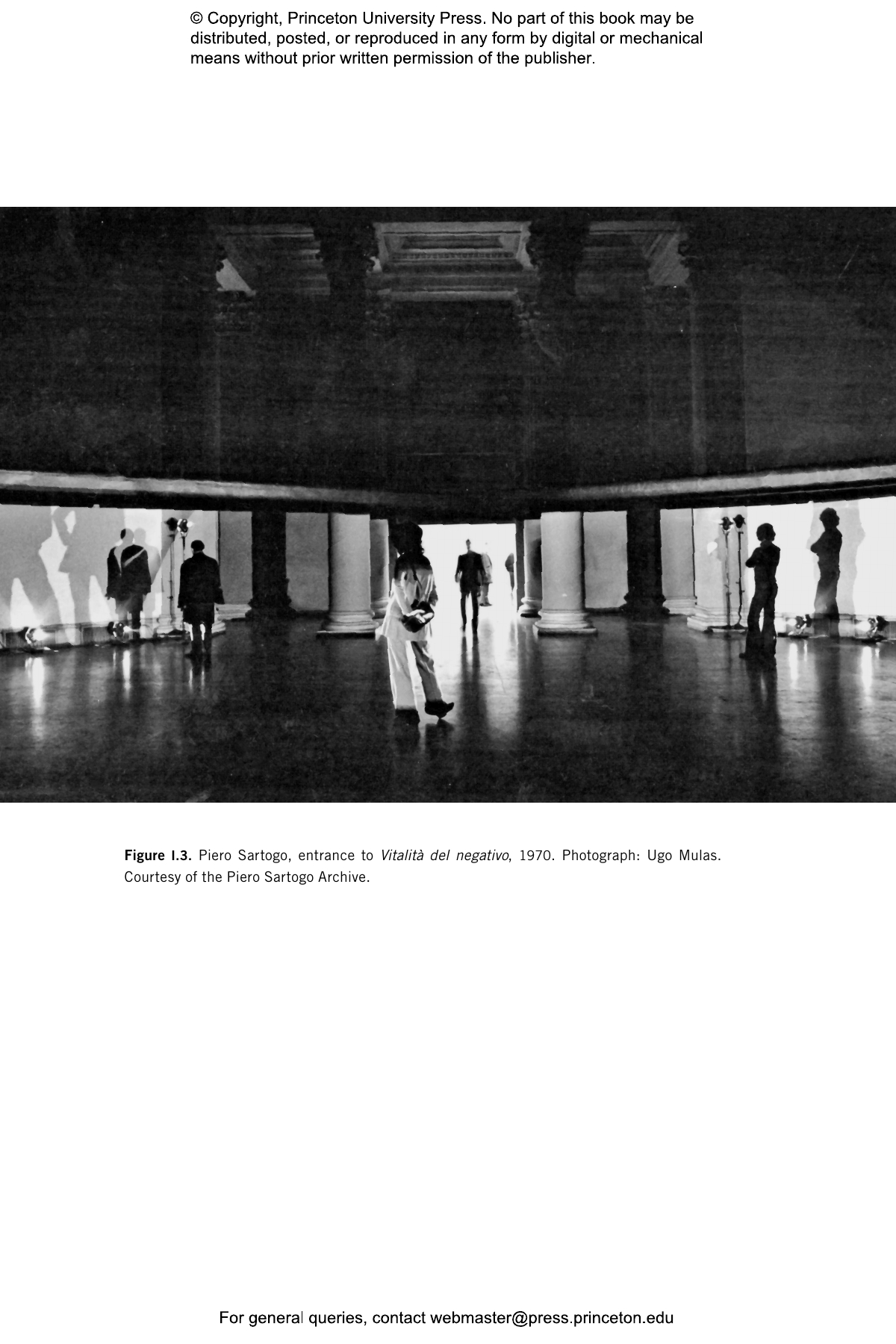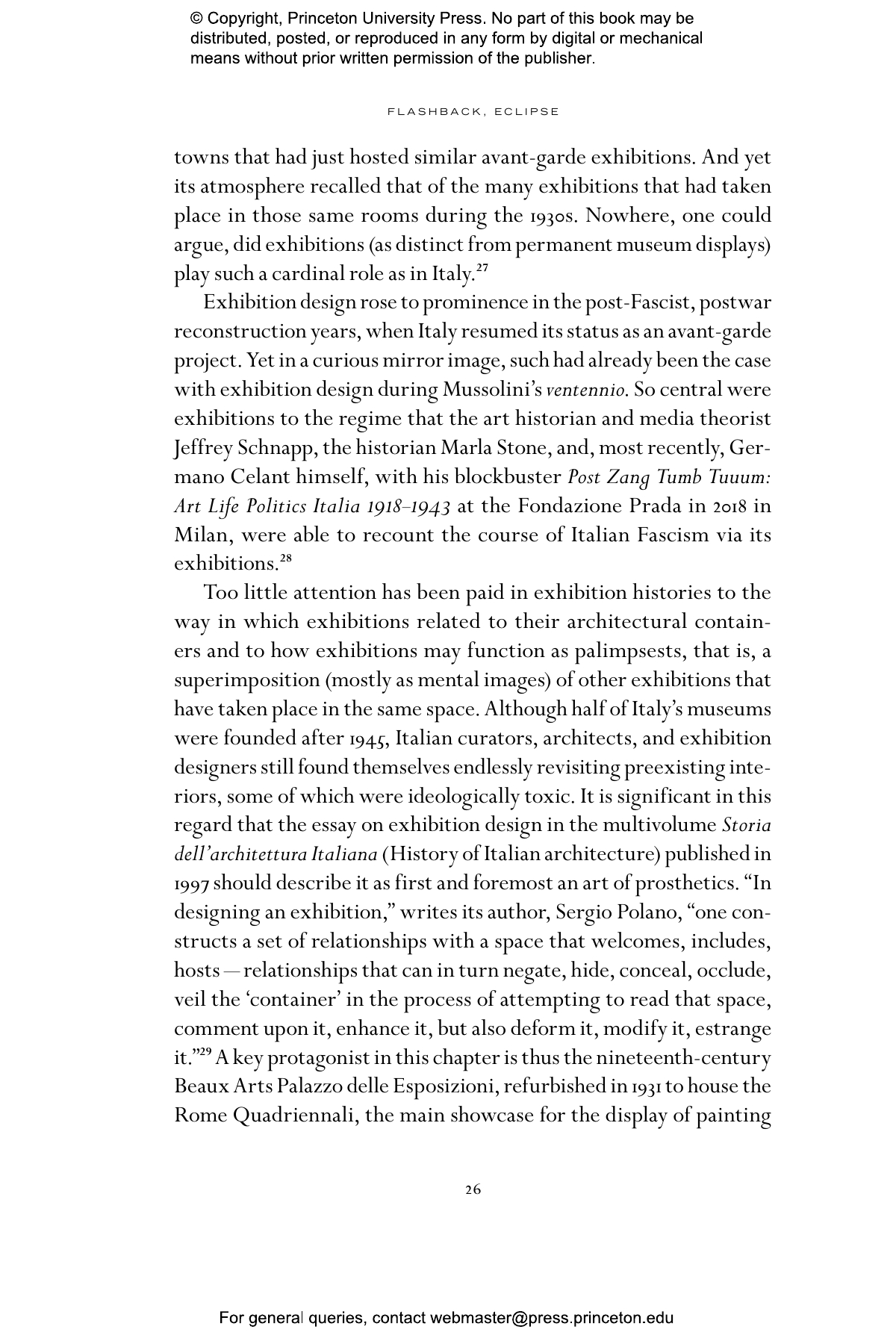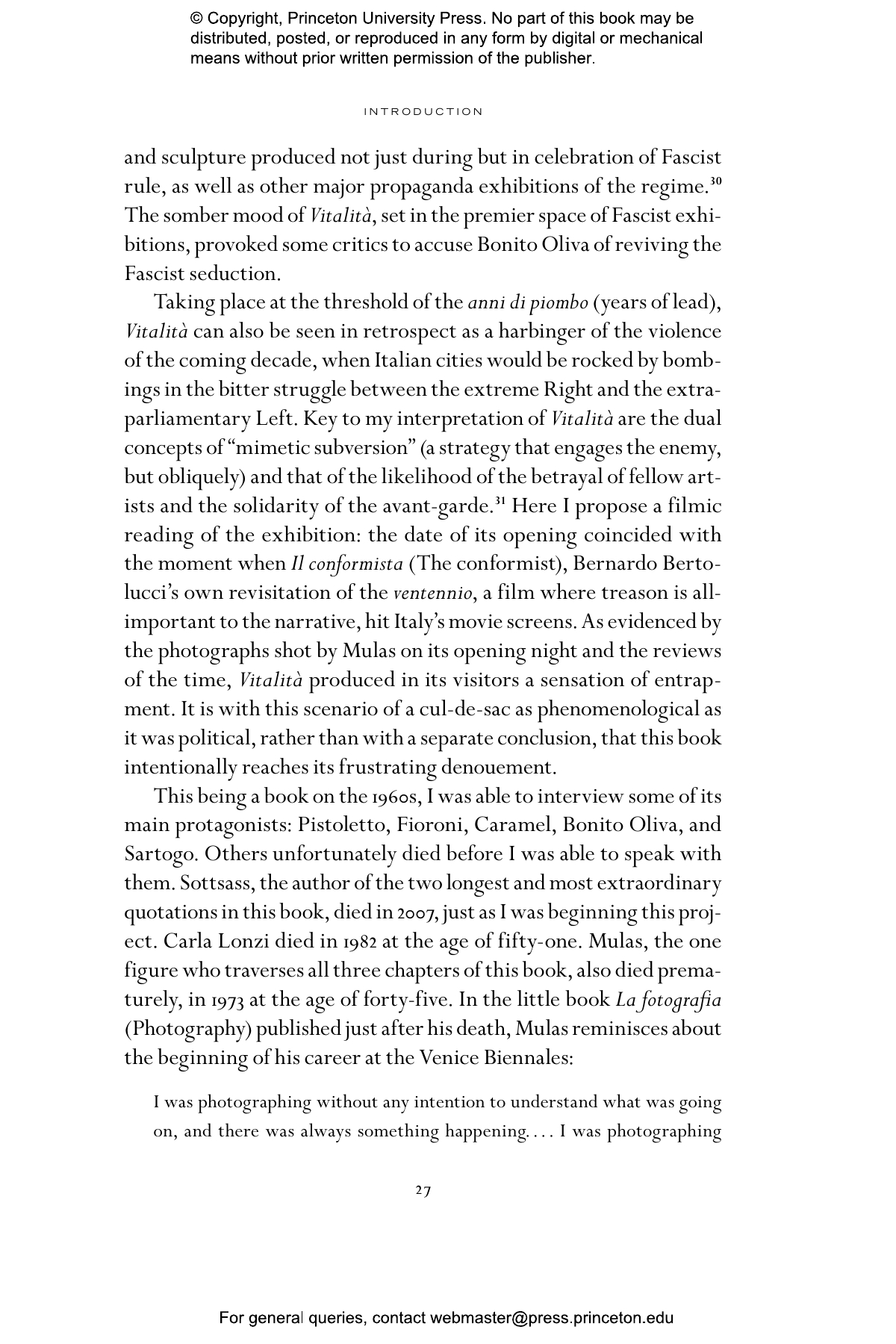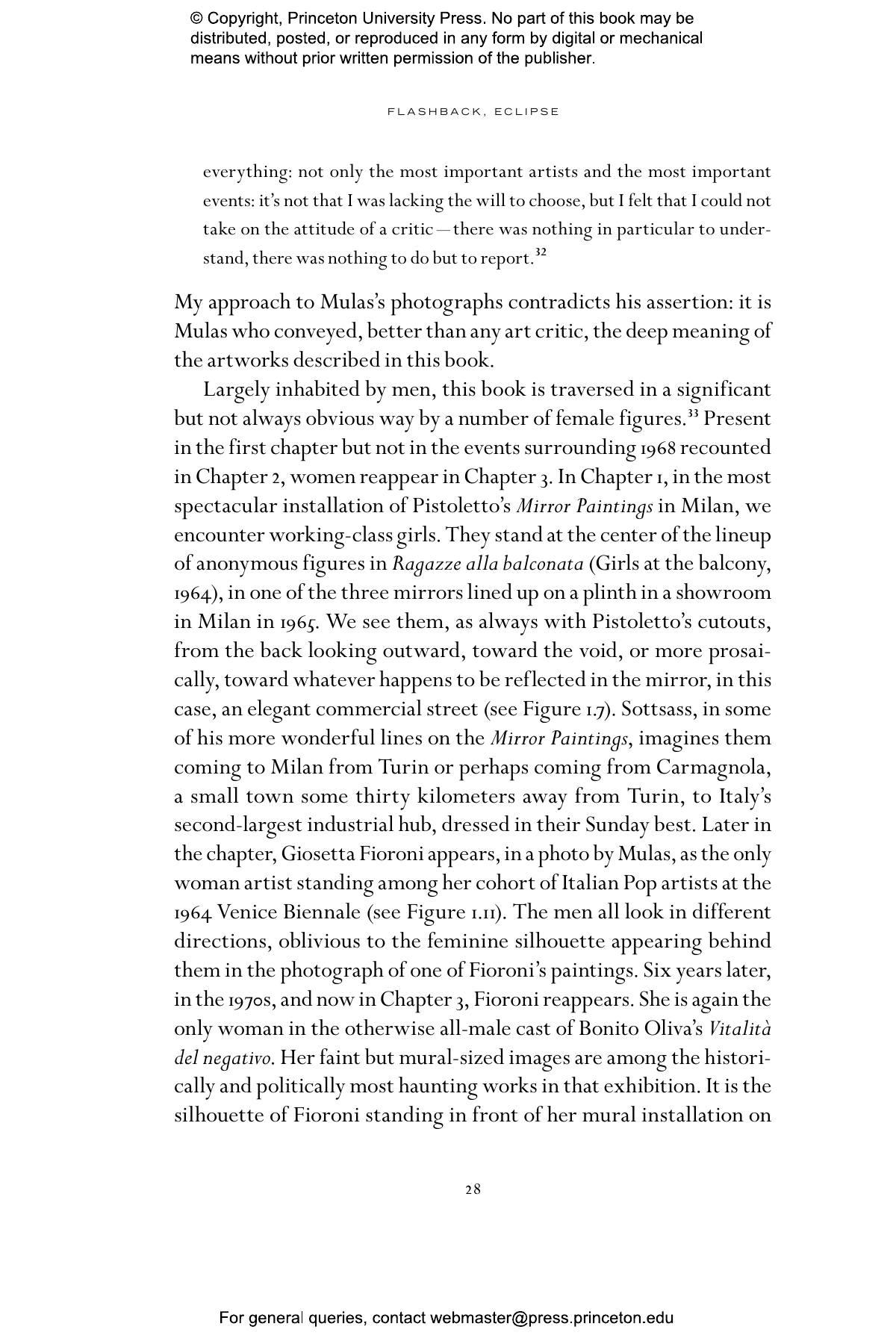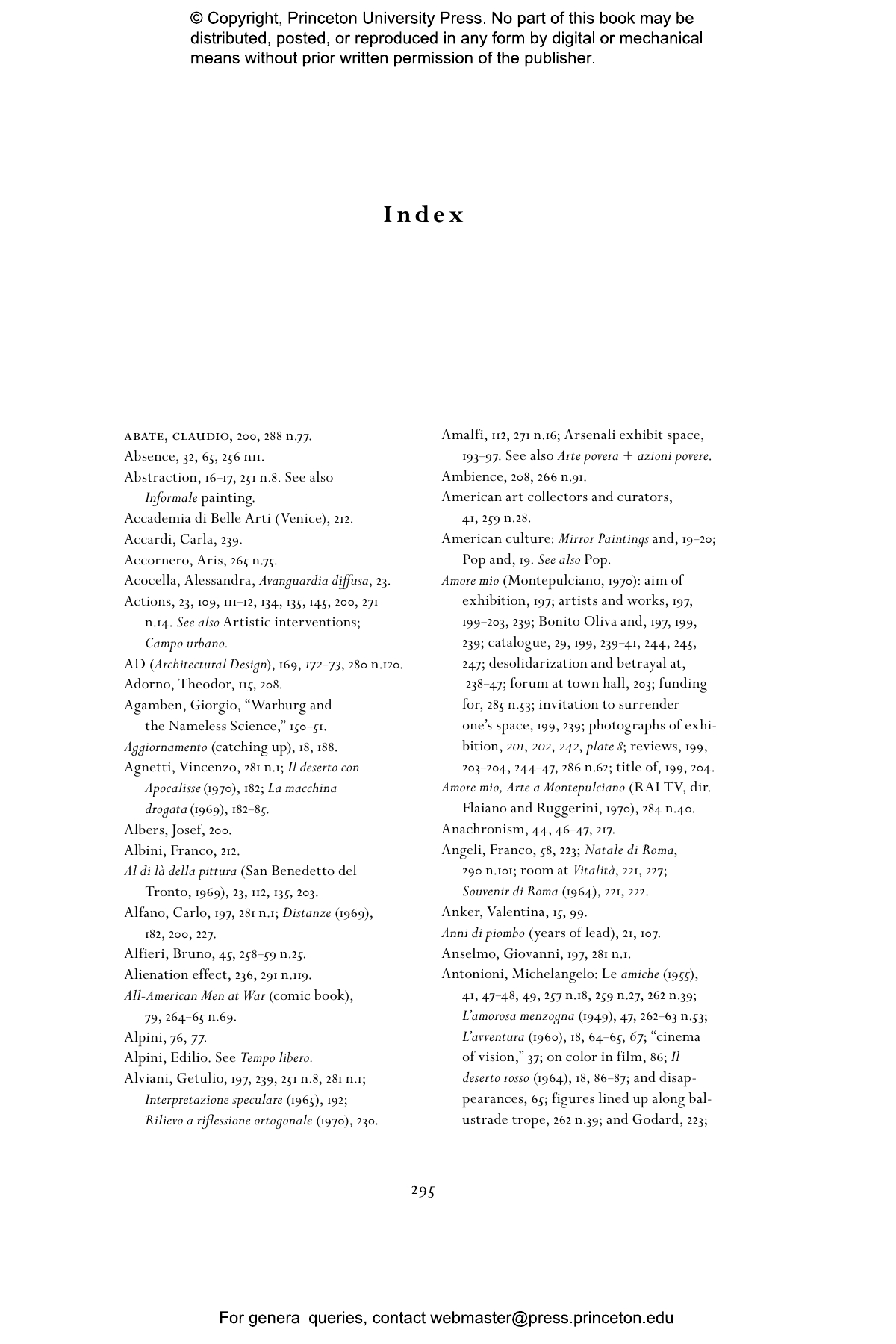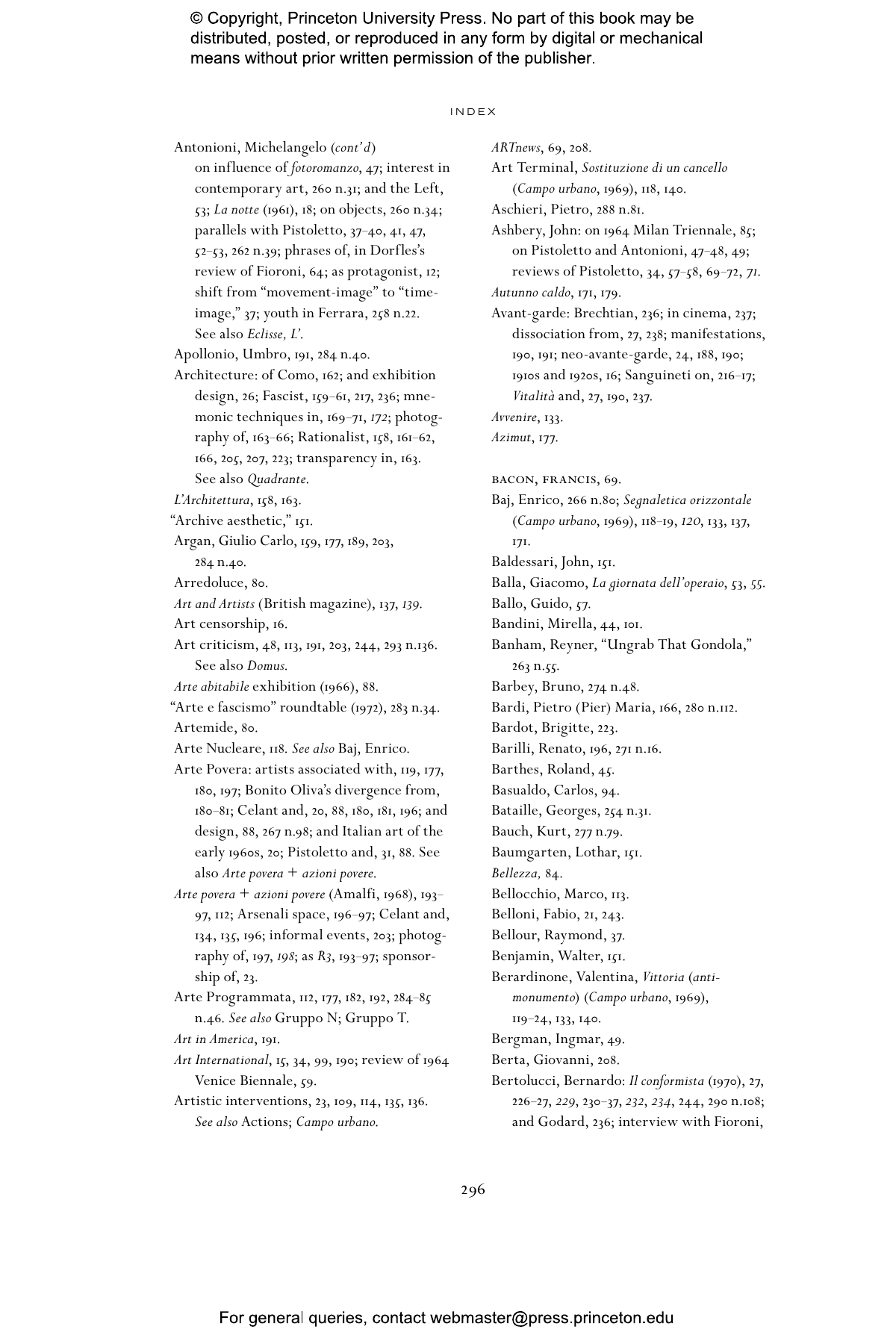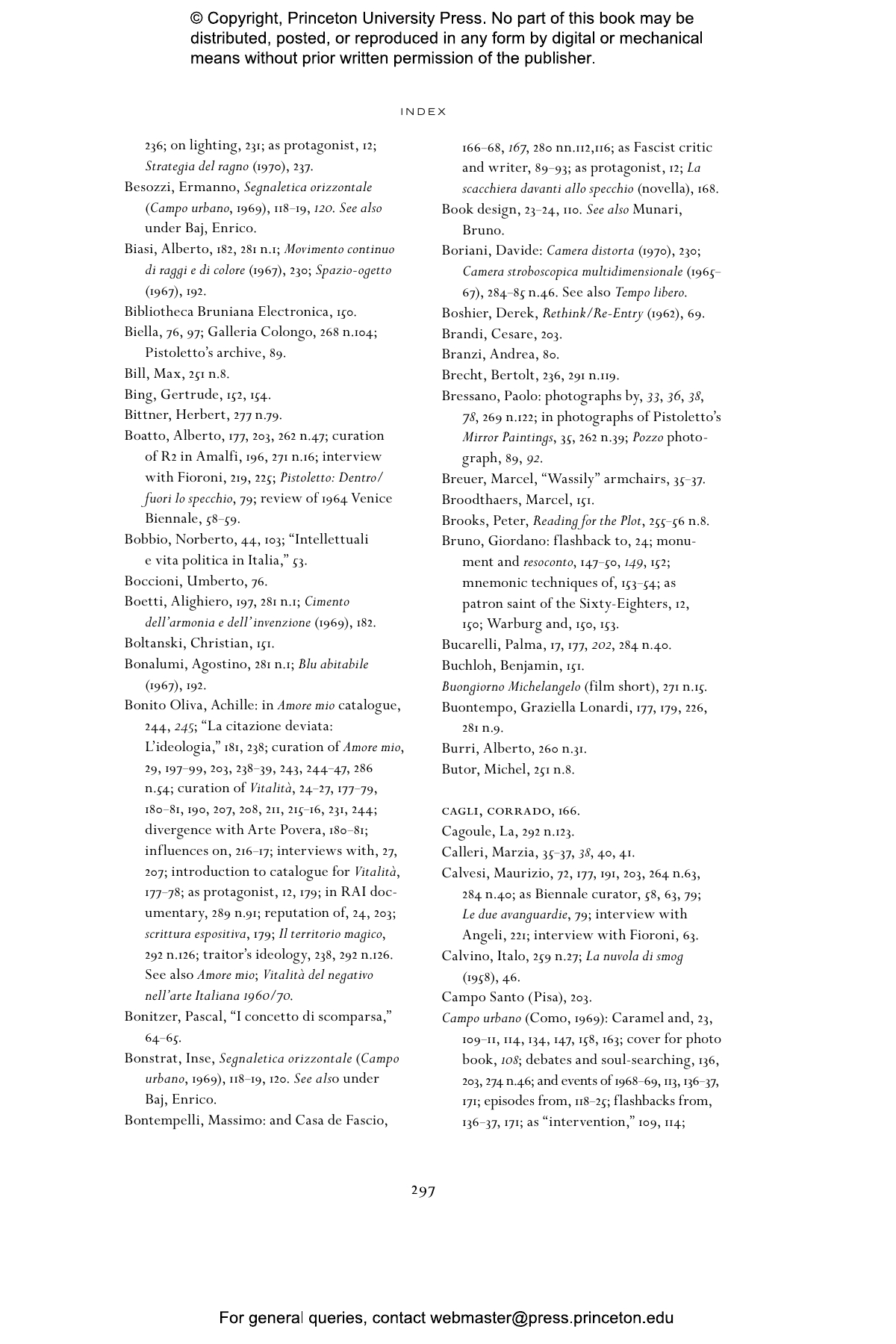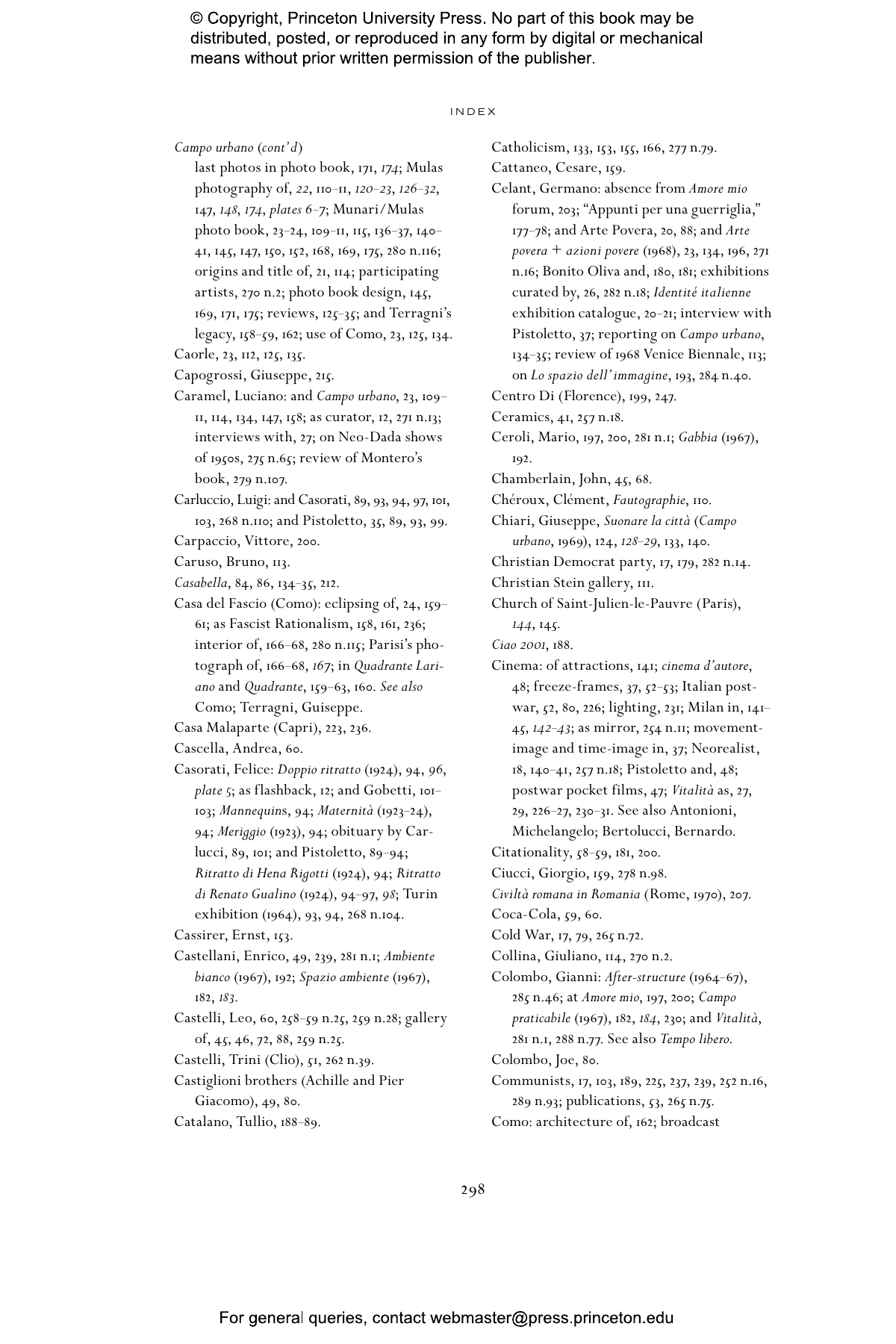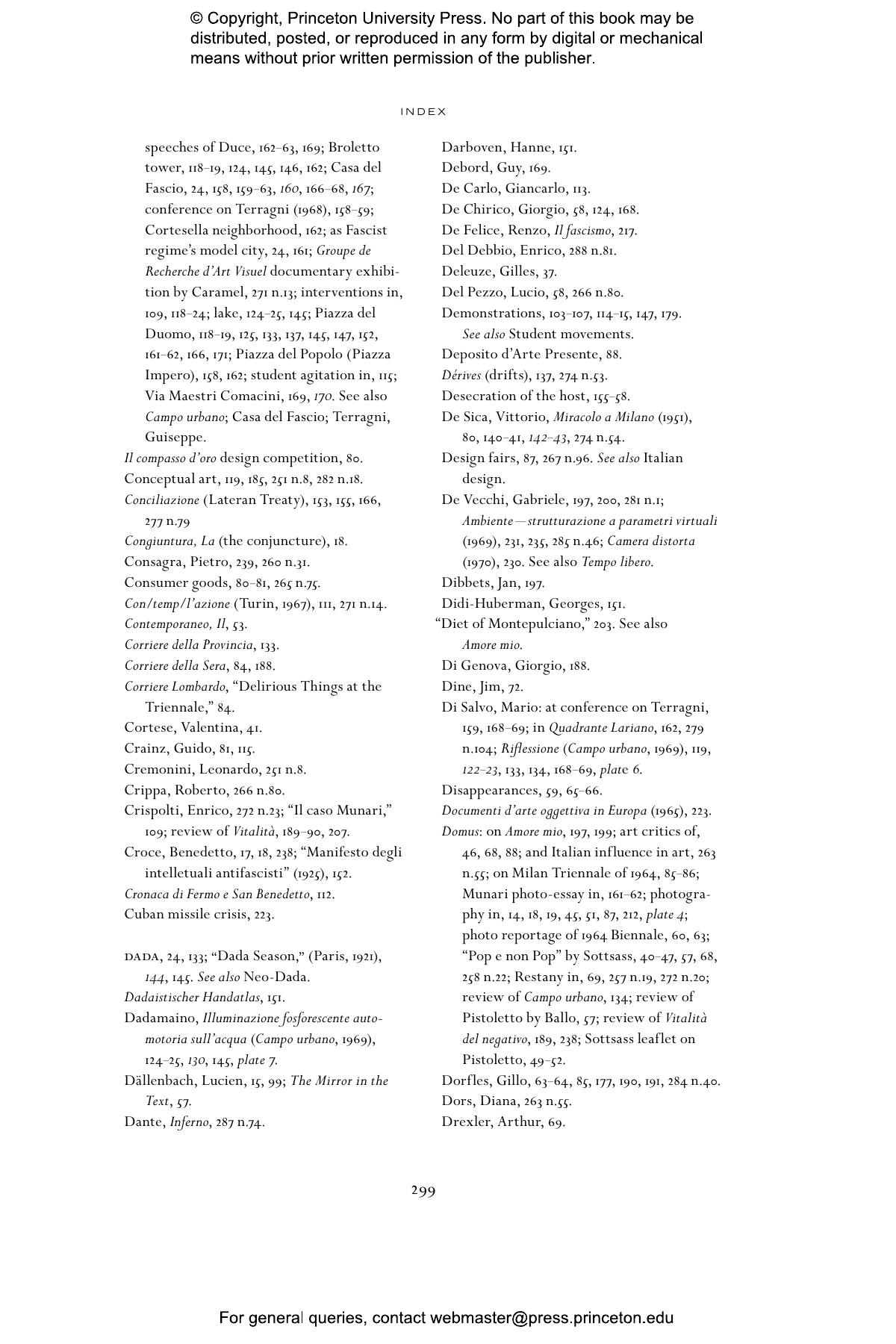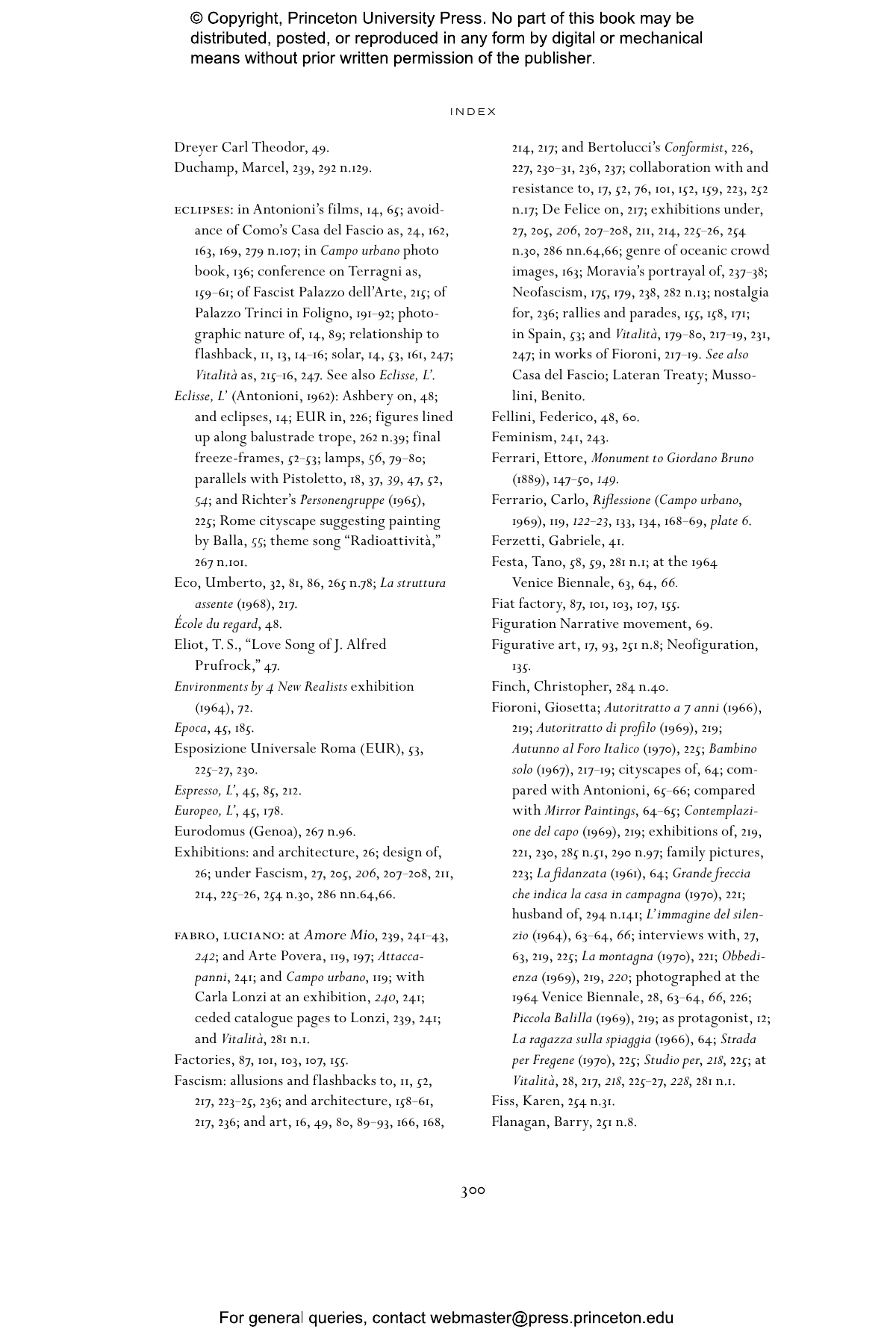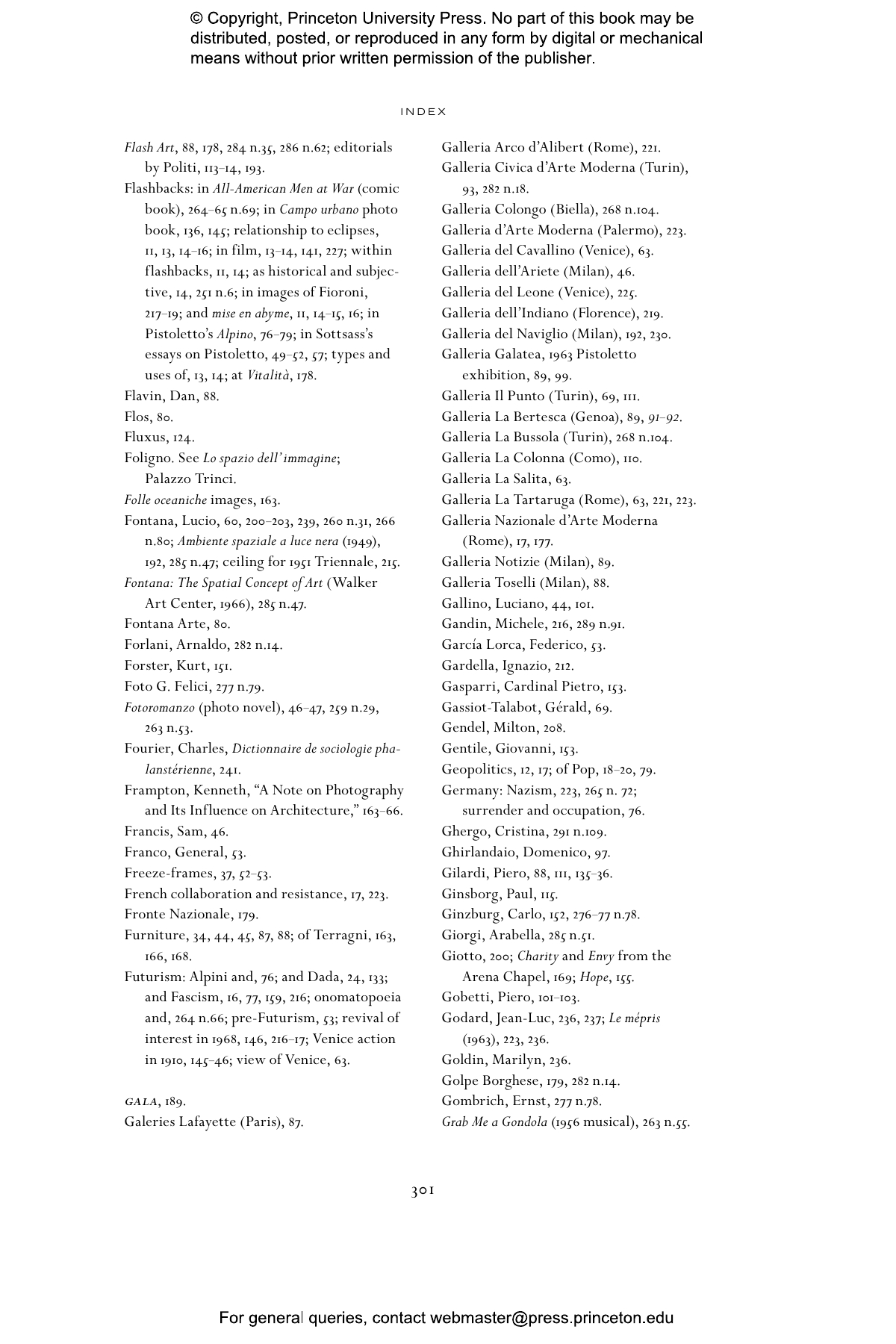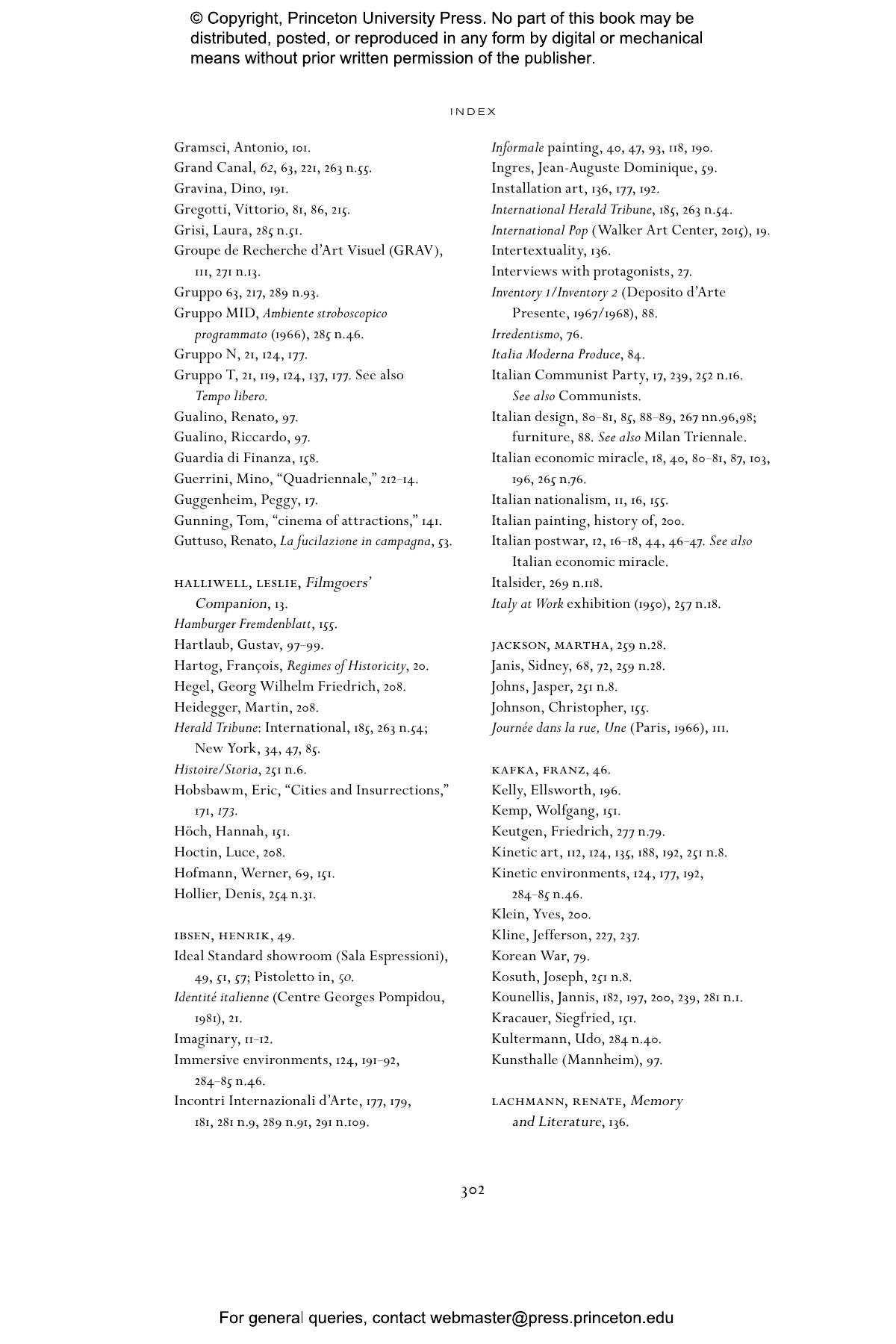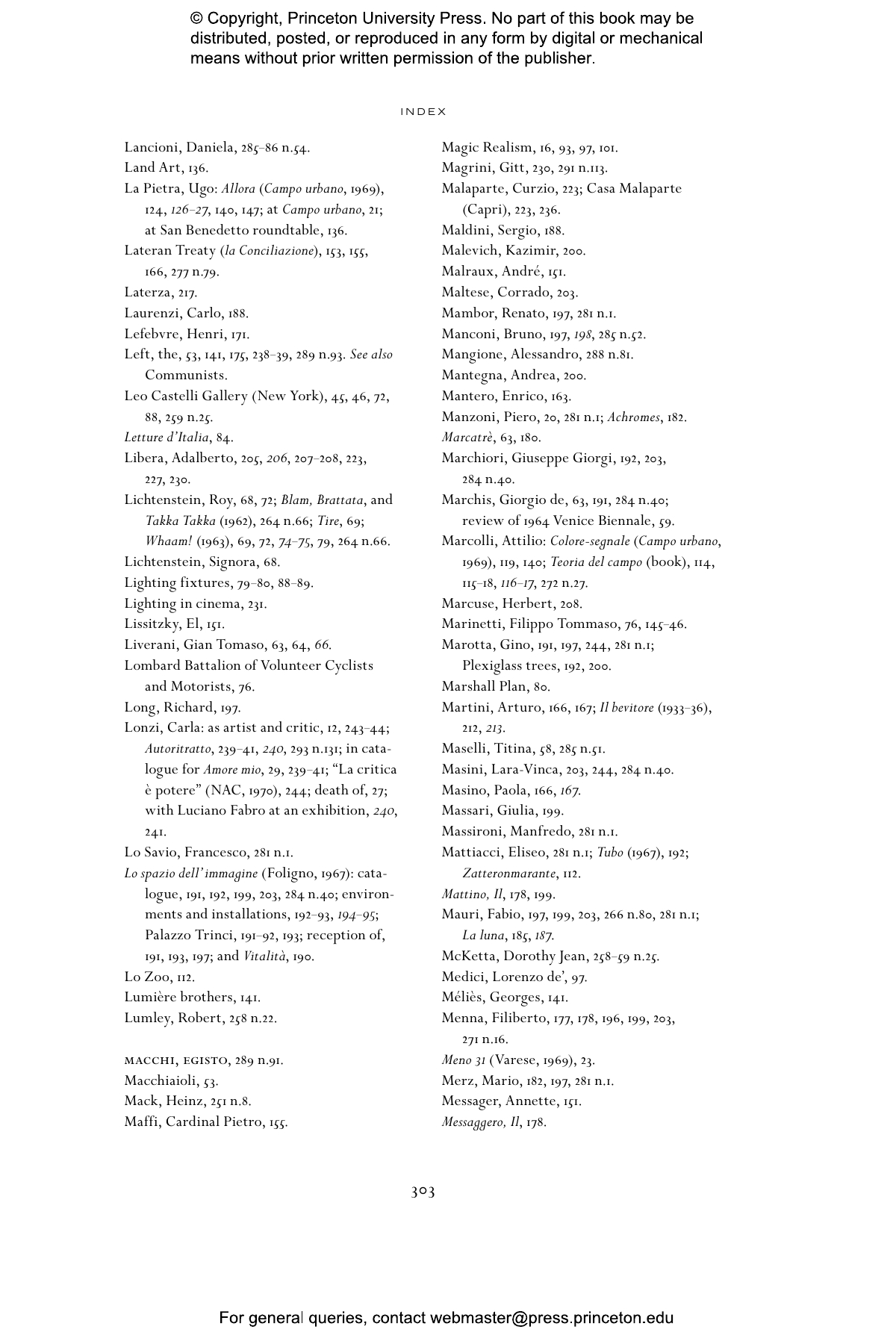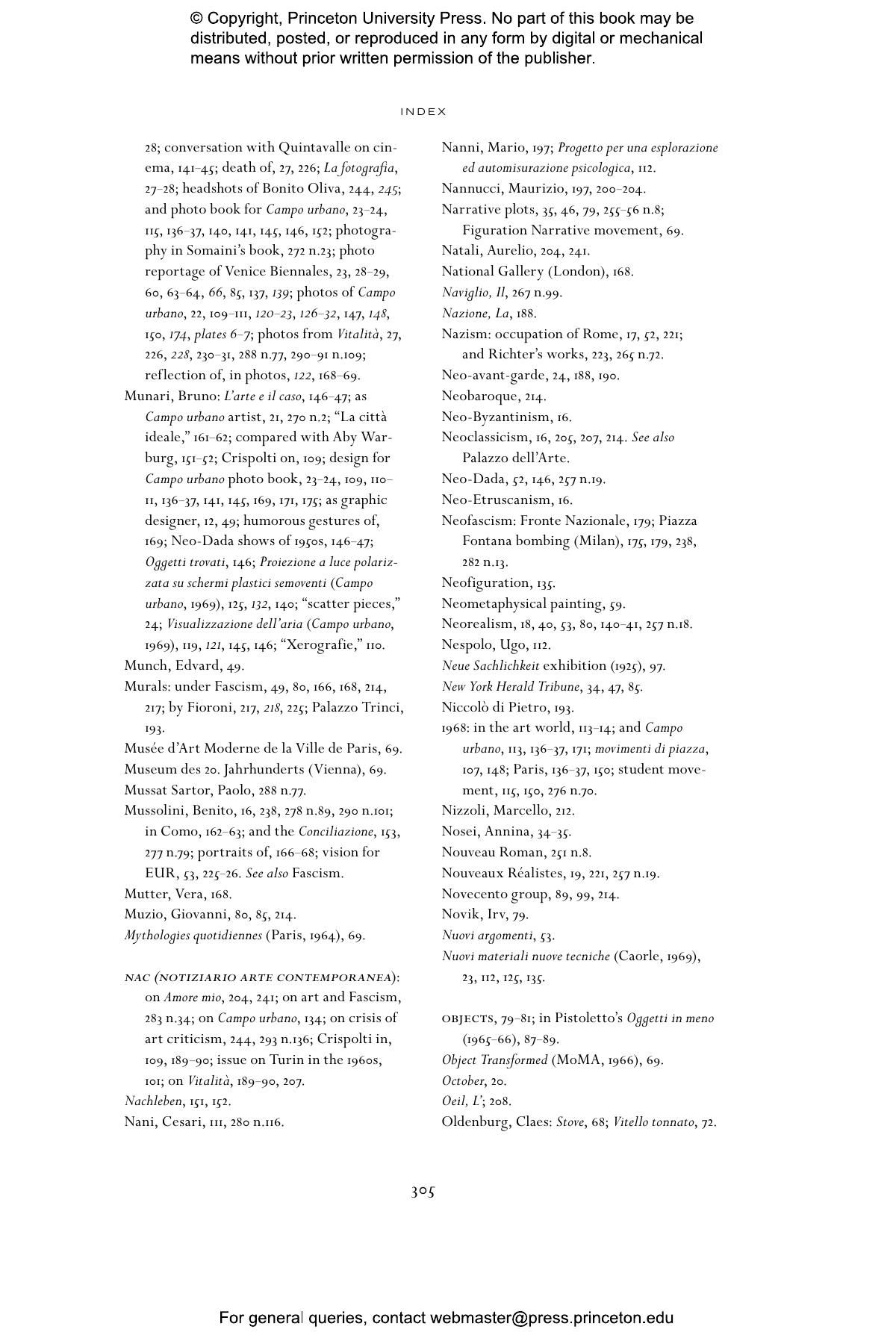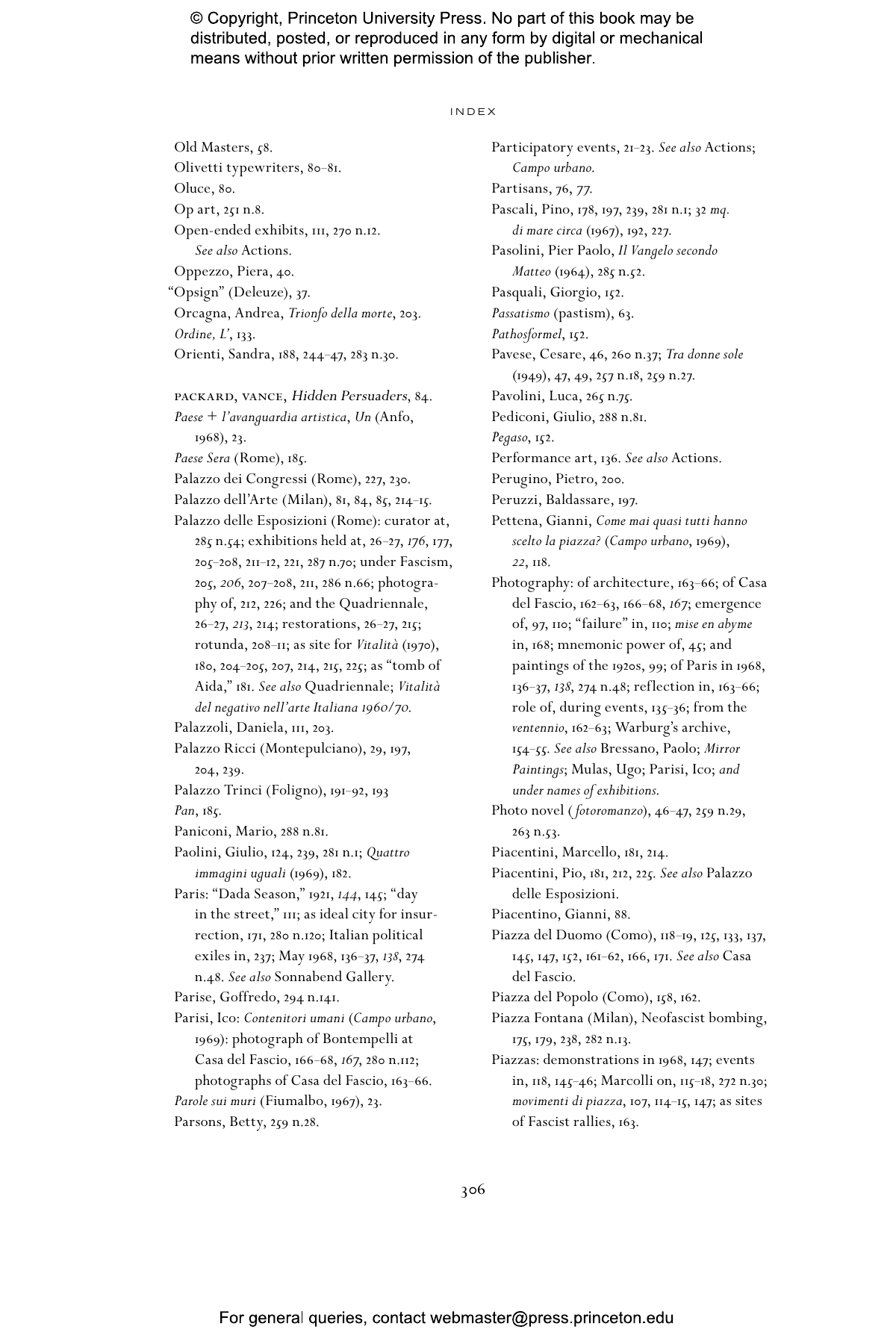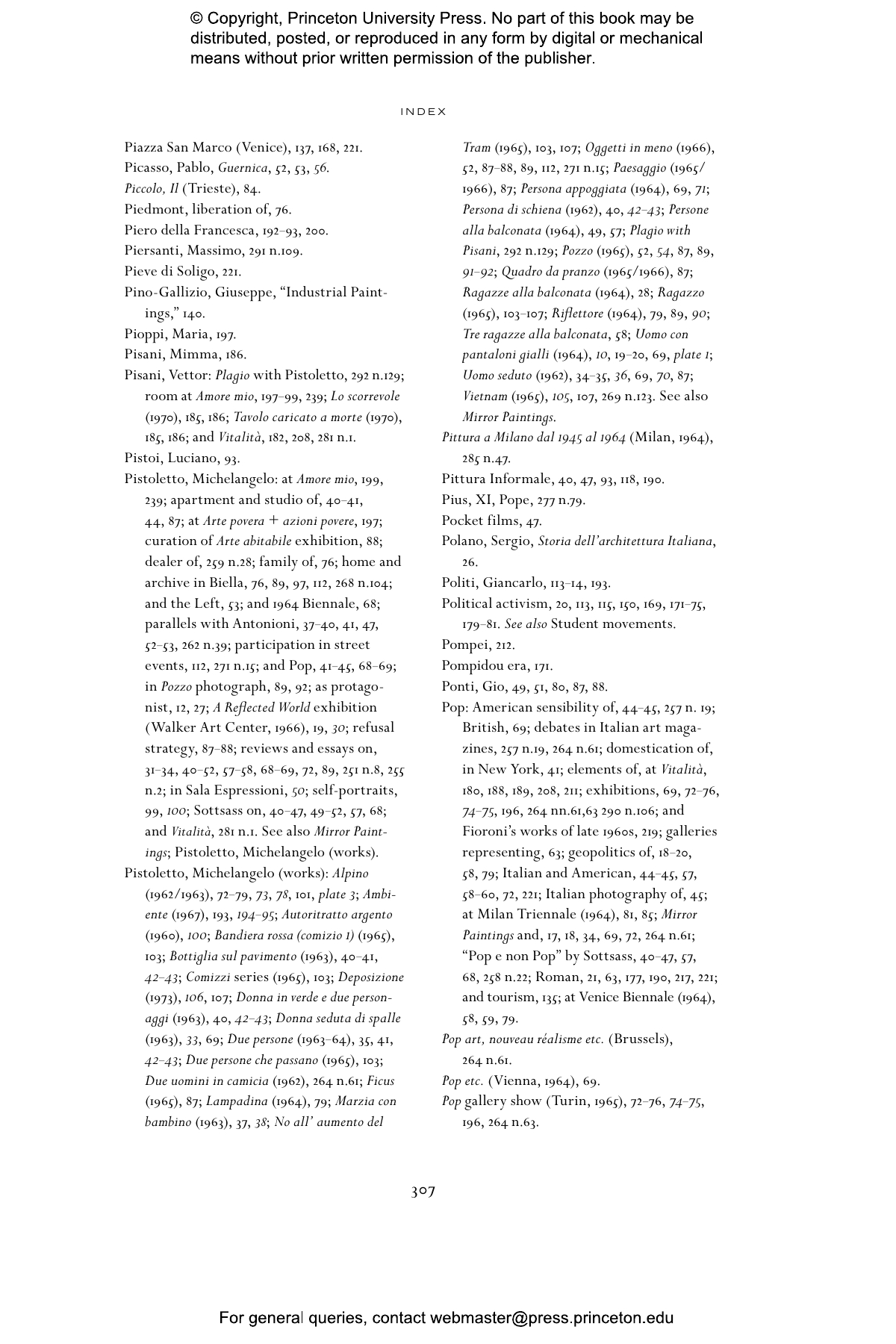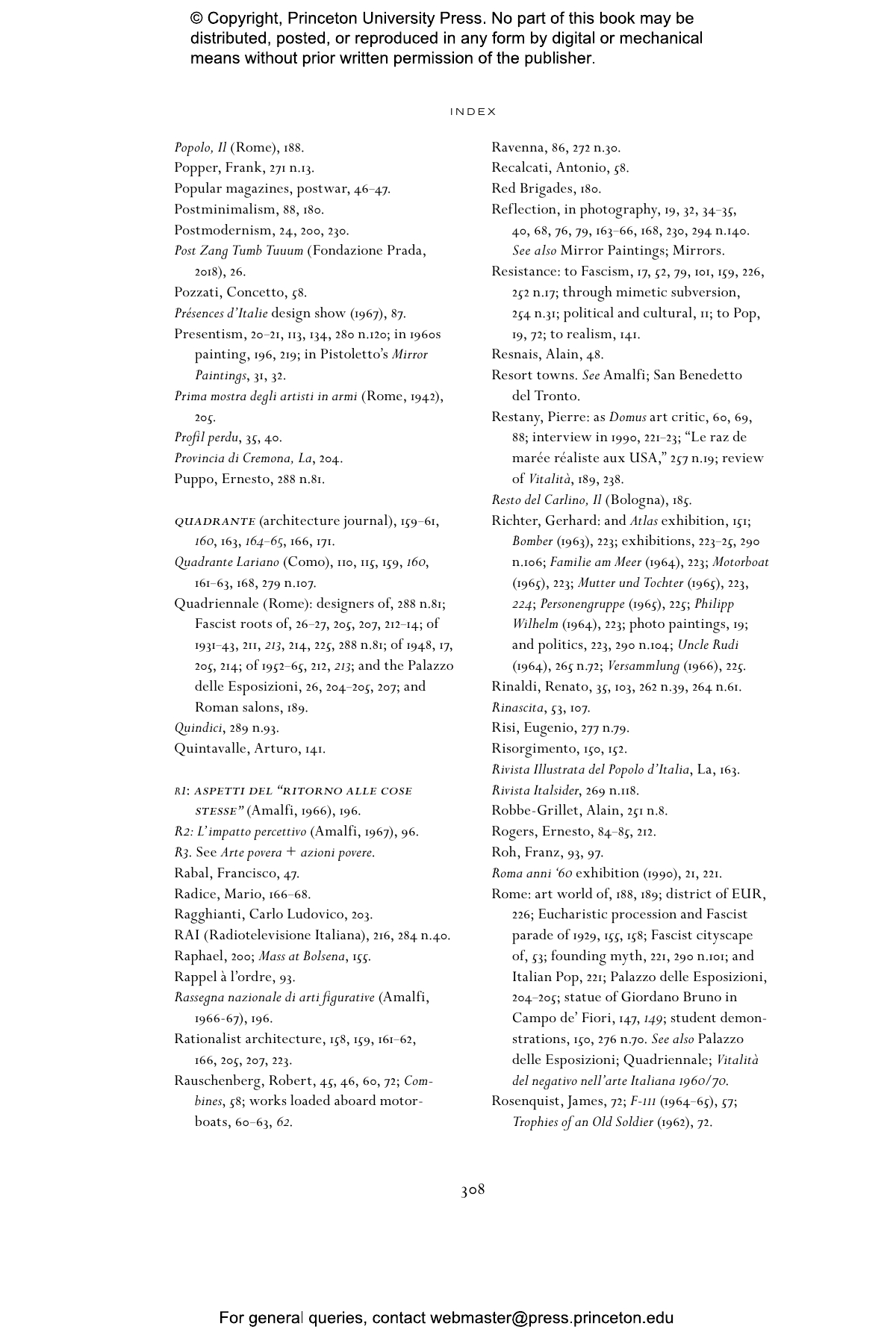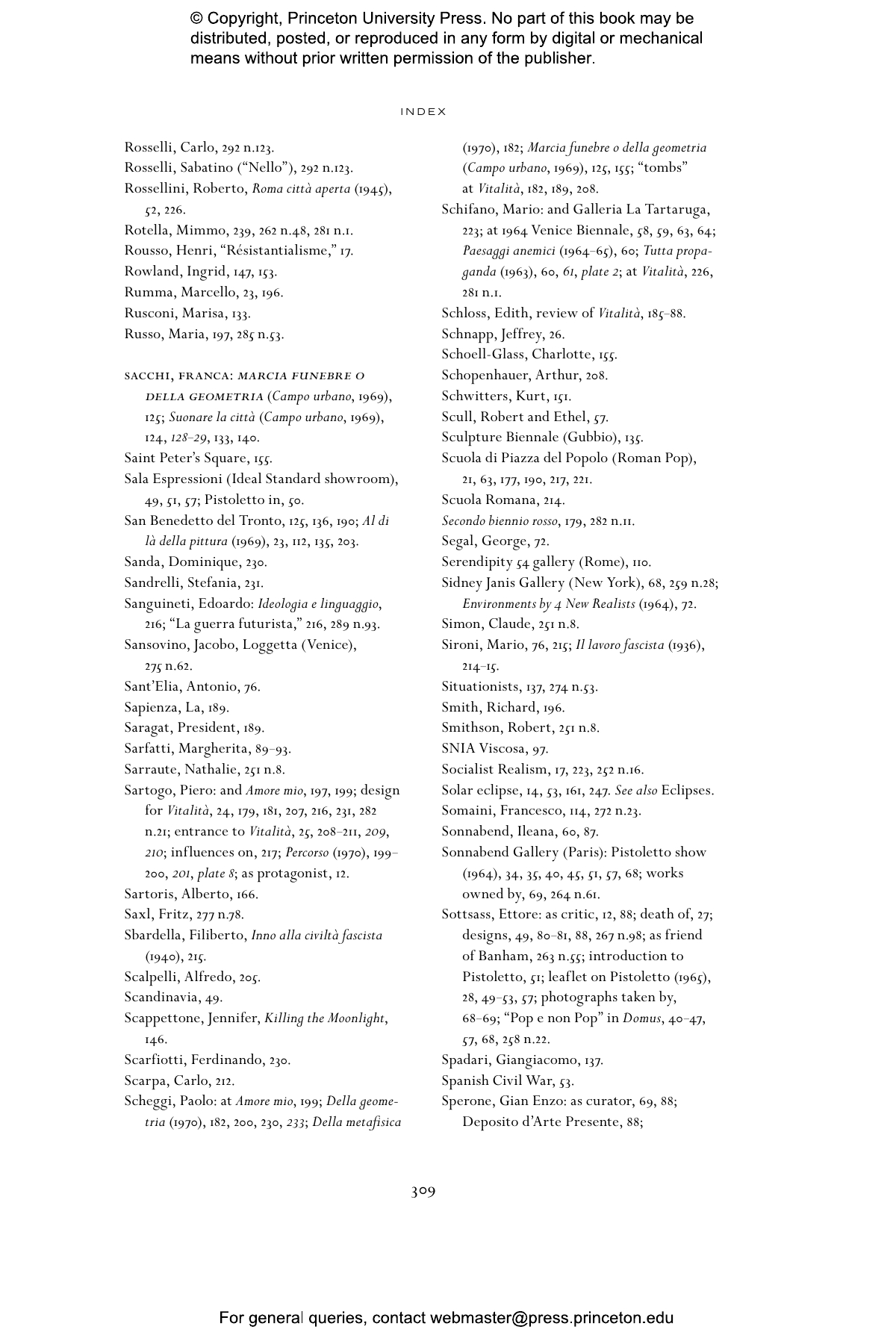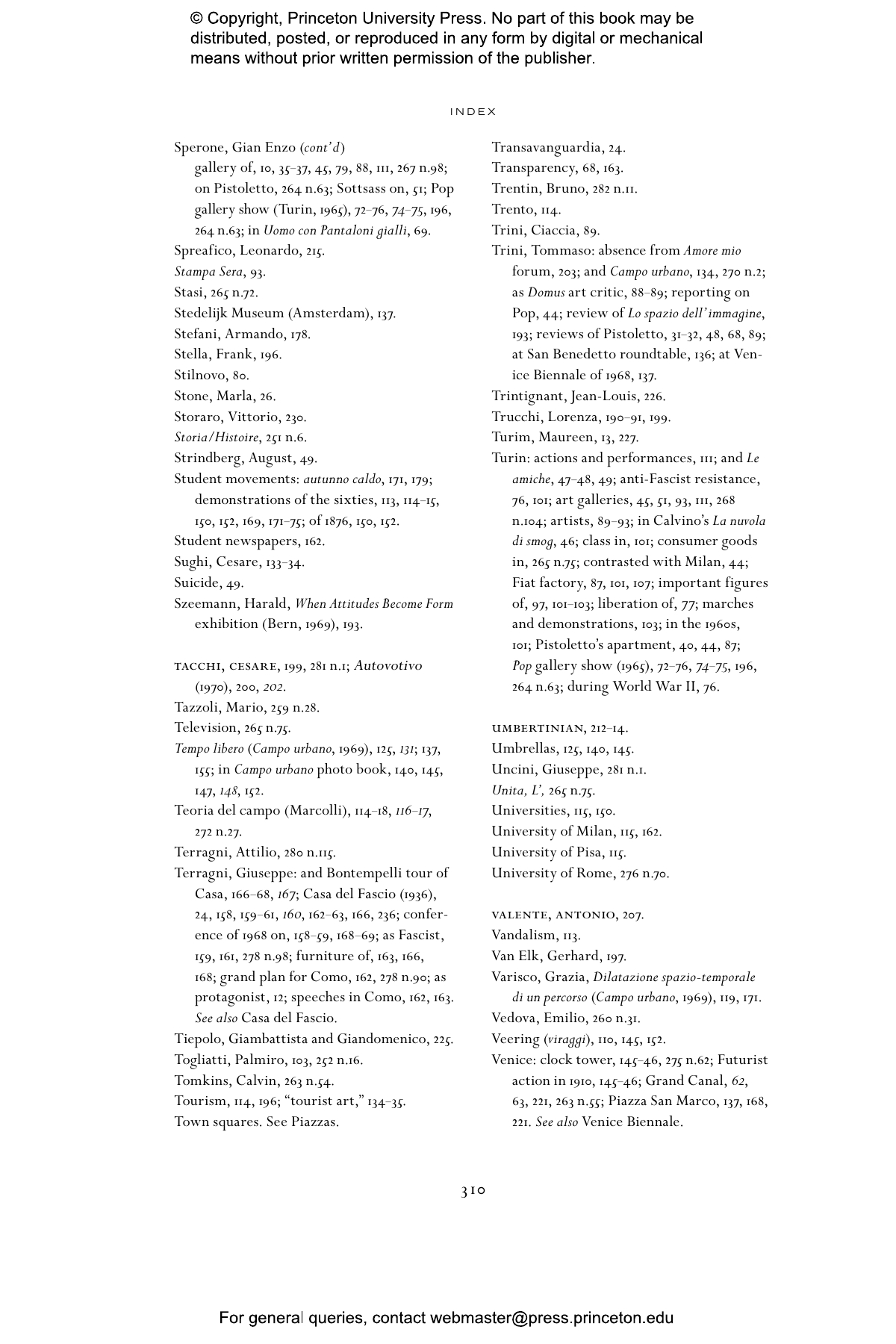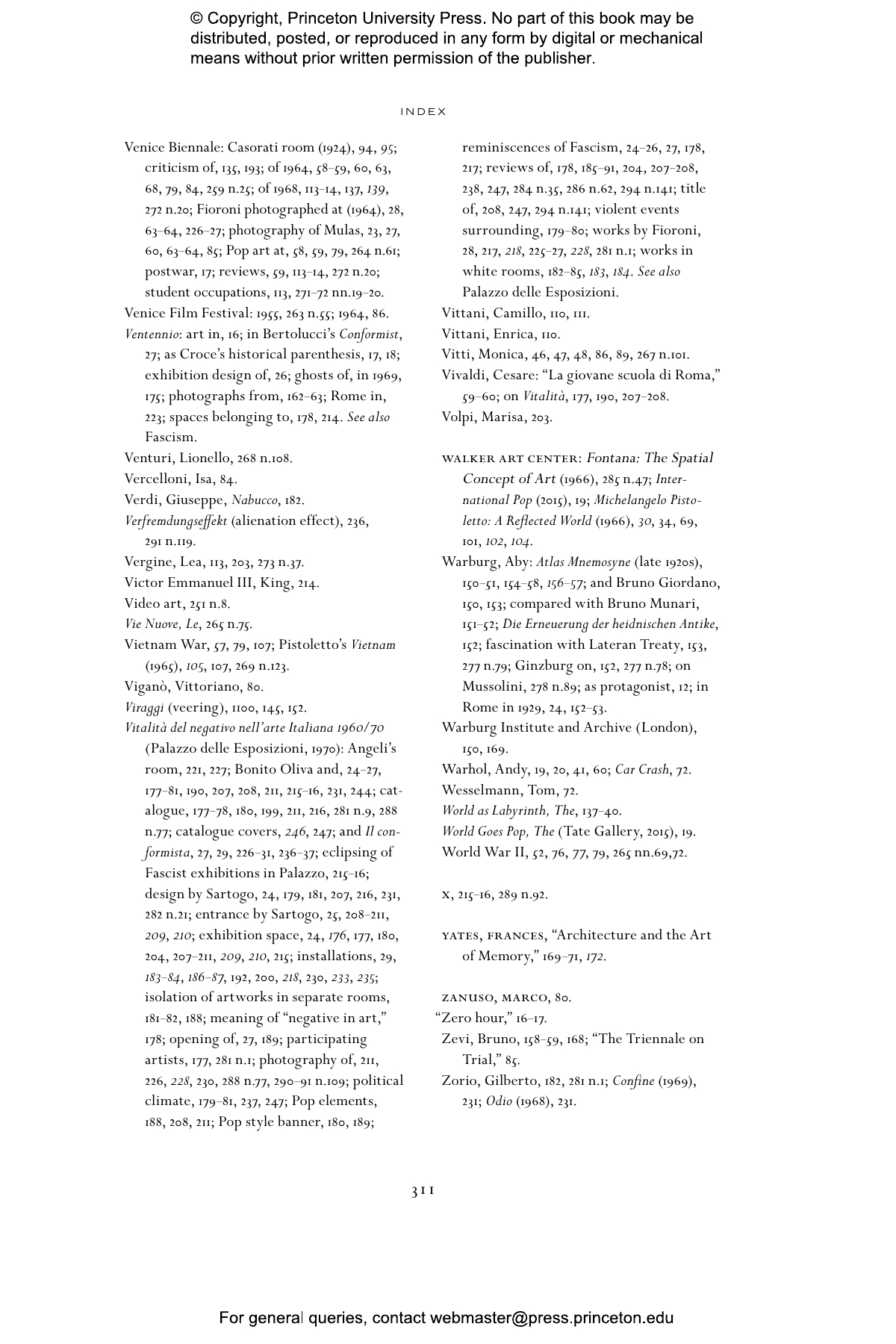Flashback, Eclipse is a groundbreaking study of 1960s Italian art and its troubled but also resourceful relation to the history and politics of the first part of the twentieth century and the aftermath of World War II. Most analyses have treated the 1960s in Italy as the decade of ‚Äúpresentism‚ÄĚ par excellence, a political decade but one liberated from history. Romy Golan, however, makes the counterargument that 1960s Italian artists did not forget Italian and European history but rather reimagined it in oblique form. Her book identifies and explores this imaginary through two forms of nonlinear and decidedly nonpresentist forms of temporality‚ÄĒthe flashback and the eclipse. In view of the photographic and filmic nature of these two concepts, the book‚Äôs analysis is largely mediated by black-and-white images culled from art, design, and architecture magazines, photo books, film stills, and exhibition documentation.
The book begins in Turin with Michelangelo Pistoletto’s Mirror Paintings; moves on to Campo urbano, a one-day event in the city of Como; and ends with the Vitalità del Negativo exhibition in Rome. What is being recalled and at other moments occluded are not only episodes of Italian nationalism and Fascism but also various liberatory moments of political and cultural resistance. The book’s main protagonists are, in order of appearance, artists Michelangelo Pistoletto and Giosetta Fioroni, photographer Ugo Mulas, Ettore Sottsass (as critic rather than designer), graphic designer Bruno Munari, curators Luciano Caramel and Achille Bonito Oliva, architect Piero Sartogo, Carla Lonzi (as artist as much as critic), filmmakers Michelangelo Antonioni and Bernardo Bertolucci, and, in flashback among the departed, painter Felice Casorati, writer Massimo Bontempelli, art historian Aby Warburg, architect Giuseppe Terragni, and Renaissance friar-philosopher-mathematician Giordano Bruno (as patron saint of the sixty-eighters).
Romy Golan is Professor of Art History at The Graduate Center, City University of New York. She is the author of Modernity and Nostalgia: Art and Politics in France Between the Wars and Muralnomad: The Paradox of Wall Painting, Europe 1927‚Äď1957.
"The book I was most excited for this year is Romy Golan‚Äôs Flashback, Eclipse. . . . Golan uses archival imagery and the journalistic coverage of installations and performances to uncover histories that may have been hidden for non-Italians or for those not wholly versed in Italian postwar art. . . . Though she writes of art in Venice and Rome, her book also takes us outside of those centers to cities like Como and Torino, so evocative of the period and place that I pictured myself reading it while sipping a bicerin on the Piazza della Consolata."‚ÄĒAmanda Gluibizzi, Brooklyn Rail
"Golan weaves a complex and significant narrative about the ways in which Italy‚Äôs past affected the art of the 1960s. Her book offers an important model by which other scholars might begin to look more critically at the ambiguities of the afterlives of fascism in Italy."‚ÄĒKatie M.J. Larson, CAA Reviews
"One could characterize Flashback, Eclipse as an immersion into the historical strata of images that constitute something like a social archive of Italian visual memory. An expert diver, Golan brings unexpected associations and resonances back to the surface, exposing the persistence of various historical pasts in what many had taken to be our perpetual present."‚ÄĒTom McDonough, Texte zur Kunst
"Flashback, Eclipse stands out from other studies of postwar Italian art in its attention to disarticulation and disruption in the smooth flow of time, precisely as suggested by the two title terms and the author‚Äôs rather brilliantly idiosyncratic choice to focus on Pistoletto‚Äôs mirrors."‚ÄĒKaren Pinkus, Italian Culture
‚ÄúAdapting the cinematic and temporal processes of flashback and eclipse recruited by Italian artists and film directors in the 1960s, Golan creates her own montage, in which art and politics, history and criticism, as well as the memory and actuality of Fascism become enmeshed through techniques of ‚Äėmimetic subversion.' The result is a dazzling mosaic that stages contemporary auteurs, like Pistoletto and Antonioni, in conversation with the historical figures of Aby Warburg and Giordano Bruno. Based on this subtle historiographic strategy, Flashback, Eclipse not only challenges prewar and postwar periodizations in Italian art, but also reevaluates the performance of anachrony in the writing of art history.‚ÄĚ‚ÄĒSpyros Papapetros, Associate Professor of History and Theory of Architecture, 91Ő“…ę University
‚ÄúRomy Golan explores the historical unconscious of 1960s Italian art as she opts for a new kind of temporality that is nonlinear and fractured. With a great command of film, graphic design, and exhibition history, she presents us with an unprecedented study of Italian artworks experienced through their mediation, suggesting that we ought to look at the filters‚ÄĒthe mirror images, hues, and experimental mise-en-page‚ÄĒthat obliterate and reveal these works.‚ÄĚ‚ÄĒMaria Antonella Pelizzari, Professor of Art History, Hunter College and The Graduate Center, The City University of New York
‚ÄúThis masterful book reveals the richness and complexity of a polycentric, dispersed, even anarchic art scene‚ÄĒthe Italy of the 1960s‚ÄĒthat no institution was powerful enough to unify, label, and export. It was known that Italy had been the laboratory of some of the most radical political experiments of the twentieth century, for better or for worse. Here we discover that, around 1968, it delivered the unexpected elements of a new political economy of the arts.‚ÄĚ‚ÄĒPatricia Falgui√®res, Professor of Renaissance Studies, √Čcole des Hautes √Čtudes en Sciences Sociales
